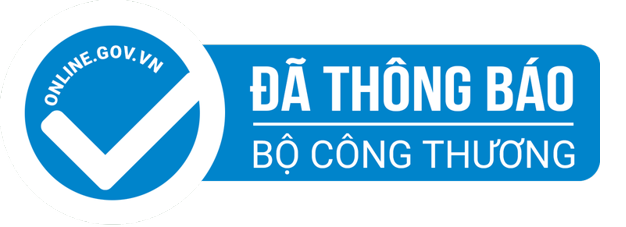MEKONG DELTA DESTINATIONS
Located in Southeast Asia, Vietnam is one of the most attractive destinations all over the world with its gorgeous landscapes, victorious history, tasty food, and rich cultural heritage. Exploring the beauty of this country will awaken all your senses and create an unforgettable experience with the most wonderful moments. Mekong Delta is including 13 provinces and cities (Long An, Tien Giang, Ben Tre, Dong Thap, Vinh Long, An Giang, Can Tho, Hau Giang, Kien Giang, Soc Trang, Bac Lieu, Ca Mau) and has its own unique tourism potential with an ecological landscape which is the combination of delta, sea and the islands.
In particular, when exploring the breathtaking beauty of combining modern Asia and medieval Asia of this country, you will have an opportunity to discover the glorious Mekong Delta. The Mekong Delta also is known as Nine - dragon Delta since the mighty Mekong River is divided into nine different rivers which bring abundant silt deposits into this region. Mekong River accreted fertile alluvium for the whole Mekong Delta with two main river branches called Tien River and Hau River. There are 2 distinguished seasons as dry season from November to the next April and the rainy season from July to October. In the rainy season, the river level is rising gradually, spill in the fields together with fishes, alluvials and water. Local people call it flooding season and the season for going fishing as well as harvesting flower and vegetable on the water surface. Sailing along the rivers in the flooding season and feeling the usual life of local people here is a kind of experience that you should never miss.
With the magnificent natural scenery of immense rice paddy fields, a system of rivers, canals channels, bamboo bridges, unique fruit-laden orchards and other typical fruits of the Mekong such as pomelo, rambutan. Mekong Delta an appealing journey and one of the should-not-miss destinations in Vietnam. It is unquestionably a trip you've never taken before to enjoy a cruise on boats and hand-rowed sampans, explore daily life with smiley faces on the river and the original culture of the southwestern region.
There are a great number of Mekong Delta destinations that should be explored once a lifetime when you arrive in Vietnam. It is actually definitely a completely unique experience to delight with the greenery, a watery landscape of green fields, sleepy villages and fresh agriculture products.
LONG AN
Located in the Mekong Delta, is surrounded by Tay Ninh Province, Cambodia, Ho Chi Minh City, Tien Giang Province, Dong Thap Province on the north, east, south and west, respectively, Long An is one of the most attractive destinations with the natural beauty of a great number of rivers and canals.
You can visit Can Duoc District is famous for “Don Ca Tai Tu” which is known as folk music of West Southern Vietnam. Vam Co River is also one of the attractive sites with adventure tours and Ton Thanh temple and Rach Nui archaeological site.
.jpg)
Ecotourism in Long An province is featured for interminable Indigo forests, giant lotus-fields, and a large number of precious animals such as tortoises, red cranes, Egrets, snakes. Besides these, some local cuisine is definitely impressed visitors in the first visit. Long An is also famous for the forest ecosystems, one of them is name Tan Lap forest. The forest is 110km away from Saigon but hidden in the middle of Dong Thap Muoi (Being known as a wetland in Vietnam's Mekong Delta, which the total area is about 697,000 hectares, Dong Thap Muoi stretches along three provinces included Long An (occupies more than half of the area), Tien Giang and Dong Thap. This is a large area in the Mekong Delta without clear boundaries whose name is called at the beginning of the 19th century by Vietnamese people during their residence. During the First Indochina War (1946 - 1954), and Second Indochina War (1955 - 1975), Đồng Tháp Mười had served as a base for Vietcong forces. In the 1980s, since primitive floating rice could only grow in this region, this feature helps to bring Vietnam from a food shortage country into one of the largest rice-export countries in the world. In addition, Láng Sen Wetland Reserve and Tram Chim National Park located in Dong Thap Muoi are founded for the conservation of wetland ecosystems. Besides, Tan Lap), the forest ecosystems that you will be able to immerse yourself into the wildlife with many wild birds, forest canals, forest walking bridge. And another incredible pagoda.
.jpg)
.jpg)
.jpg)
TIEN GIANG
Located in the north of the Mekong Delta, being well-known for fertile land with different tropical fruits, Tien Giang is a province that can give you a brief look at the Mekong delta with fruit gardens, small canals, and friendly people. More importantly, Tien Giang is the best option for those who want a day trip to the Mekong Delta from Saigon. So, if you want a trip to Tien Giang, you should come to its capital which is My Tho.
Back in 1679, a group of Chinese fled to Vietnam and asked Nguyen Lord to settle down in Vietnam and Nguyen Lord let them come to the newly cultivated area of the Far South. A group of them came to My Tho and built it into the biggest trading town of the South of Vietnam at that time (My Tho Dai Pho). However, with the fast growth of Sai Gon - Gia Dinh, My Tho lost its importance and gradually developed into a satellite town. During wartime, people in My Tho suffered a lot and that’s the reason why they fought so hard to regain a peaceful life. Nowadays, My Tho is the provincial capital of Tien Giang province with over 100.000 people.
Tien Giang is famous for beautiful ladies, in the history of Vietnam there were 2 queens of the Nguyen dynasty originally from here, who were Tu Du and Nam Phuong (the last queen of Vietnam). Besides, the 1st lady of South Vietnam government (wife of President Ngo Dinh Diem) was also from Tien Giang.
Islands: There are 4 small islands in the middle of Mekong River near My Tho and they are named after the 4 sacred animals of Asian culture, which are Dragon, Phoenix, Turtle and Unicorn (a combination of tiger, dragon and dog). In those islands, there are plenty of shady fruit orchards that you can take a seat, enjoy the fruits and have some green tea. Moreover, you can walk along the island to see how the locals raise the bees for honey, make coconut candies and handicrafts from coconuts. Besides, it is an interesting experience to get on a sampan to drift along the small canals and see beautiful landscapes along the way.
Vinh Trang pagoda: Vinh Trang pagoda is the 1st one to be recognized for its “east meets west” architecture. When coming to Vinh Trang pagoda, you can see various combinations of Khmer, Thai, Vietnamese, Chinese and French architecture in one construction. Moreover, there are 3 giant statues of Buddhas in the yard that makes this place famous. And you cannot miss seeing a priceless collection of statues inside the main hall of this pagoda. Vinh Trang pagoda is a perfect stop for anyone wants to have a few mindful moments.
Chanh Giac Zen Monastery: This new monastery is another religious construction for anyone who loves to learn about Buddhism. Chanh Giac Zen Monastery is not only famous for its Vietnamese branch of Buddhism, but this place also gives you the feeling of Cambodia or Thailand’s atmosphere.
Dong Tam Snake Farm: Located in the rural area of My Tho, Dong Tam Snake Farm is the biggest snake farm in Vietnam where people are searching for the antidotes against the snake’s poison. When coming here, you’ll see many different types of snakes and even a collection of giant snakes in an exhibition in the center of the farm. This is a good choice for nature lovers.
BEN TRE
Located in the Mekong Delta, Ben Tre is a province surrounded by rivers and canals with 3 major islets as well as a lot of paddy fields and coconut gardens. As a matter of fact, Ben Tre is covered with countless green coconut jungles running to the horizon, hence the name “coconut capital” of Vietnam. The coconut tree plays a special role in the cultural lifestyle as well as the economic development of Ben Tre and its residents. Moreover, Ben Tre possesses a golden chance to promote eco-tourism for international tourists.
In 2019, about 50% of the coconut growing area in Vietnam is located in Ben Tre, with a total area of more than 71 thousand ha. There are around 163,000 households that grow coconuts, making up the annual production of nearly 800 million fruits.

The basic techniques and procedures of growing coconuts consist of these following noteworthy steps: knowledge about different species of coconuts, how to select the right species, distance, density, fertilizer, and pest prevention. Coconut is a plant species that likes to grow in bright areas. There is a fun fact that one can estimate the length of the coconut root by looking at the length of the leaves on top of the tree as they are pretty much the same, and vice versa. Based on this interesting feature, the coconut farmers can scrape the soil, add fertilizer and mud, decide the distance among the trees or grow other plants in between in the most proper way.
When visiting the coconut fiber workshops in Ben Tre, most international tourists share the same feeling that it is another version of the floating market in Can Tho. The coconut fiber craft village in Ben Tre has attracted more than 1,000 workers in the community and from other adjacent areas. The final coconut fiber product is the main material to weave into various eye-catching handicrafts such as carpets, hats, handbags, baskets, and teapots. There are also a number of coconut candy workshops, which produce one of the tastiest specialties of this “coconut capital.” The coconut candies are made right at the workshops. When poured out of the molds, they are still hot, soft and chewy but not too sweet, which is best to try out at the place or bring home as souvenirs.
The coconut tree in Ben Tre has a lot of applications in daily life. Coconut juice is a healthy, tasty drink for scorching days and the main ingredient to make coconut jelly, which is quite favored in the market. Coconut flesh is used to make coconut oil for make-up, coconut candy, sweetened coconut, and coconut ice-cream. Coconut shell can be used for burning and making ropes or fertilizer for crops. Coconut leaf is mostly for roofing, building walls and presenting at most important occasions or family ceremonies, especially at weddings, festivals and Tet holiday. Coming to the “coconut capital” during the wedding season, you will be impressed by those stunning wedding gates shaped like dragons, phoenixes, doves, hearts, and flowers are carefully woven and handmade from coconut leaves.
In Ben Tre, besides having a chance to enjoy the natural beauty and many dishes made from coconut parts, international tourists and travelers can also try cycling through the long pathways across the village under the cool shades of coconut jungles. In foreign countries, it may be hard to live an industrial and overwhelming life, so those cycling trips along Ben Tre village is a good chance for you to experience and enjoy the tranquility of the riverside life as well as having some moments for yourself in the middle of a Vietnam’s rustic countryside.
Ben Tre is specifically famous for “dua sáp”, which is a very valuable and infamous coconut species. Ben Tre’s dua sáp is often used for eating rather than drinking, which is basically different from the juicy feature of other coconut species. Its flesh is much thicker compared to drinking coconuts and is especially sweet, fatty and fragrant with a lot of nutrients that are good for skin, digestive system and body muscles. If a wax coconut tree has a bunch of 10 fruits, there are probably only 1 or 2 fruits that are actually dua sáp, while the other ones are just ordinary juicy coconuts. Therefore, the dua sáp in Ben Tre is not only delicious but also rare and valuable. In fact, its market price ranges from about 200,000 to 350,000 dongs/fruit, and there are only 2 places that grow in the Mekong Delta, which are Ben Tre and Tra Vinh.
VINH LONG
Surrounded between two major rivers of Tien and Hau Rivers in the center of the Mekong Delta, Vinh Long is a splendid destination in the Southern region of Vietnam with rich, fertile soil, many exotic and delicious fruits. Coming to Vinh Long, visitors can enjoy not only a great number of laden fruit gardens such as mango, orange, durian, longan, grapefruit, mangosteen, coconut, rambutan… but also the area’s distinctive culture. With a total size of over 60km2, An Binh islet is a green destination which is ‘must-see’ elements of an itinerary. This islet with a vast area of fruit gardens attracts hundreds of tourists coming to experience the typical cultural features of the delta.
With a dense network of rivers and canals, coming to An Binh islet, you can enjoy the relaxing feeling of sitting on a small canoe watching the perfectly ripe fruits in the gardens. Tourists coming here cannot only try rowing the small boats along the narrow canals while watching prosperous, greenish villages but can also have a chance to visit many fascinating tourist attractions over there. The Bonsai garden owned by Mr. Sau Giao located in Binh Thuan hamlet, Hoa Ninh commune; the stilt house of Mr. Muoi Day made of wood and located on Ninh Hoa canal; or the old house of Mr. Hai Hoang built in a French architectural style with a large front yard, rambutan gardens and longan gardens in the back. There are countless trivial but interesting spots that are hidden all over An Binh islet waiting to be explored.

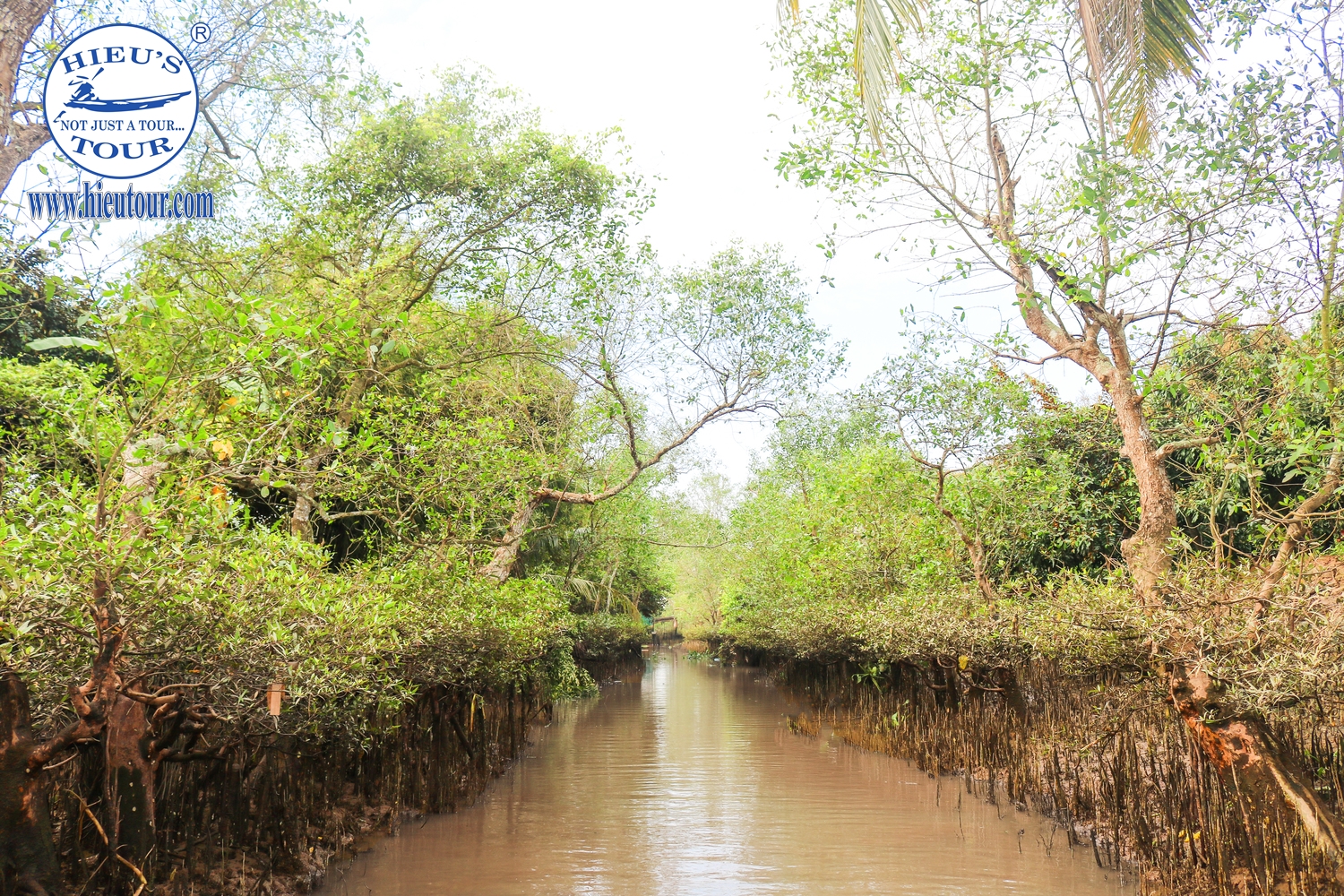
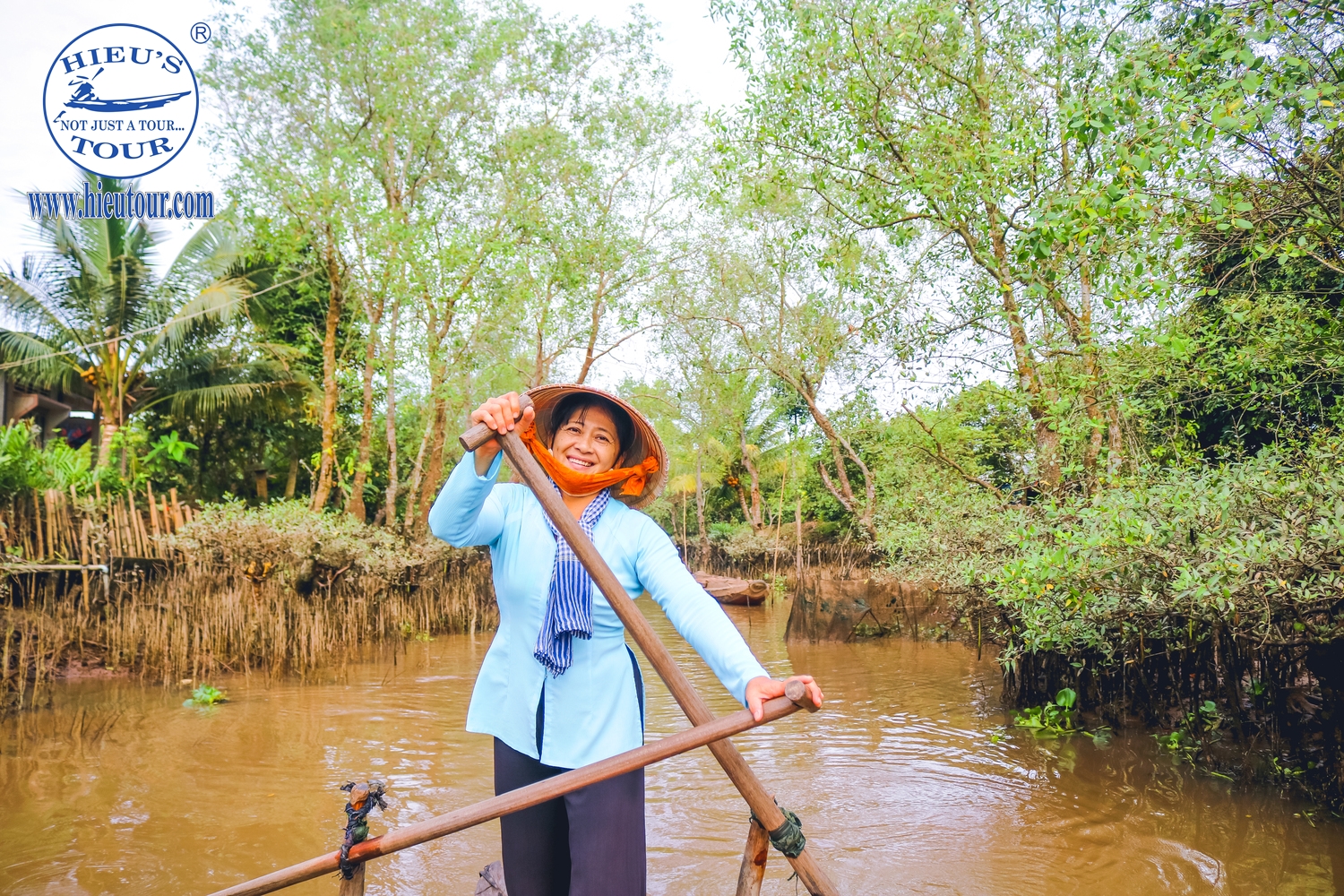
TRA VINH
Being known as a coastal province in the Mekong Delta and lying alongside the North of Tien River, Tra Vinh is one of the attractive vacation spots in the Mekong Delta with natural landscapes and the cultural history of the Southwest region.
This province borders Ben Tre and Vinh Long on the north, with Soc Trang on the west and possesses coastline of 65 km with East Sea. With a total area of about 2292 square kilometers and a population of about 1.1 million people, Tra Vinh is the province with varied ethnic groups, including the ethnic Vietnamese accounts for most, about 29% members of the Khmer Krom ethnic group the rest is Hoa people. Tra Vinh is famous for spiritual tourism which is featured by a variety of temples and pagodas with Khmer’s design and ecotourism with a great number of beaches, the vast fruits garden.
Ba Om pond: One of the famous tourist spots that the tourists should not miss to drop is Ba Om pond. About 5 km (3 miles) from Tra Vinh, this is a spiritual destination for the Khmer ethnic group with ancient architecture and surrounded by fresh water and a lot of ancient trees to create its own unique features to this place.
Ba Dong coast: Located in Duyen Hai town, about 55 kilometers from the central city, Ba Dong coast will be the extremely amazing experiences for the journey to Tra Vinh of tourists with the natural beauty of numerous splendid white sandhills and green casuarina trees.
Ang Pagoda: Being built in the 10th century, Ang Pagoda (Chùa Âng) is one of the most popular tourist sites in Tra Vinh with its ancient and unique Khmer architecture. This Pagoda is 5 km (3 miles) from the center of Tra Vinh.
Hang pagoda: About 5 km (3 miles) from Tra Vinh, as its nicknames-Stork Pagoda, Hang pagoda is a home of many storks and one of the best places for the visitor to explore the Khmer civilization.
The Khmer Culture Museum: For the tourists who want to explore the glory days of the Khmer civilization, as well as collections of musical instruments and farming tools in the daily life of Khmer culture, the Khmer Culture Museum is one of the most wonderful experiences for the tourists.
DONG THAP
With the location in Viet Nam’s southern Mekong Delta region, Dong Thap province is considered a region related to pink lotus, stork garden and the sunset in paddy fields. It is the best option for visitors who want to enjoy quiet peaceful countryside and escape from the hustle and bustle of a crowded city. There are numerous natural scenic spots and historical and cultural sites are this beautiful province. Located in the area of Dong Thap Muoi, Tam Nong district, Dong Thap province, which is about 140km from Ho Chi Minh City and nearly 120km from Can Tho, Tram Chim - Tam Nong National Park is one of the must-see destinations to visit Mekong Delta. This is a naturally flooded land and has been categorized as a part of the special-use forest system in Vietnam. This is featured with a great number of different kinds of plants, exotic birds such as the red-headed crane, which is an extremely rare bird on the Red List and needs close protection and vertebrates, tens of species of fish and more than 198 kinds of water birds, the third of which makes up a fourth of all birds in Vietnam. When visiting this place, tourists can explore the chilling canals by the narrow sampan while observing a variety of birds flying around, feeding and loudly calling their flocks. Coming here, you can also enjoy numerous rustic dishes carrying a breath of the countryside such as grilled snake-head fish, braised fish with water lilies, steamed snails with pepper, field crab hot-pot, braised eel with lemongrass, crispy fried fish balls, sun-dried snake-head fish, etc, especially some dishes made from field rats as well.
-1311.jpg)
With the distance about 150km from Ho Chi Minh City and nearly 80km from Can Tho, Gao Giong Bird Sanctuary is the best options to immerse yourself in the distinctive landscape of Dong Thap Muoi. This is a huge area of primeval melaleuca forest with a 70-kilometer network of rivers and small canals and a cool, refreshing atmosphere. With the majestic natural sceneries and the ecological diversity of around 130 different kinds of plants that make Tram Chim - Tam Nong National Park an absolutely worth-visiting destination.
Sa Dec flower village is one of the gorgeous choices to discover the Mekong Delta in all beauty. With an overall size of around 500ha and more than 2,300 families growing about 2,500 different ornamental flowers, Sa Dec flower village has been famous for growing flowers as a traditional job for ages. The tourist can be attracted by various flower species and have a chance to get an album full of gorgeous, satisfying shots.
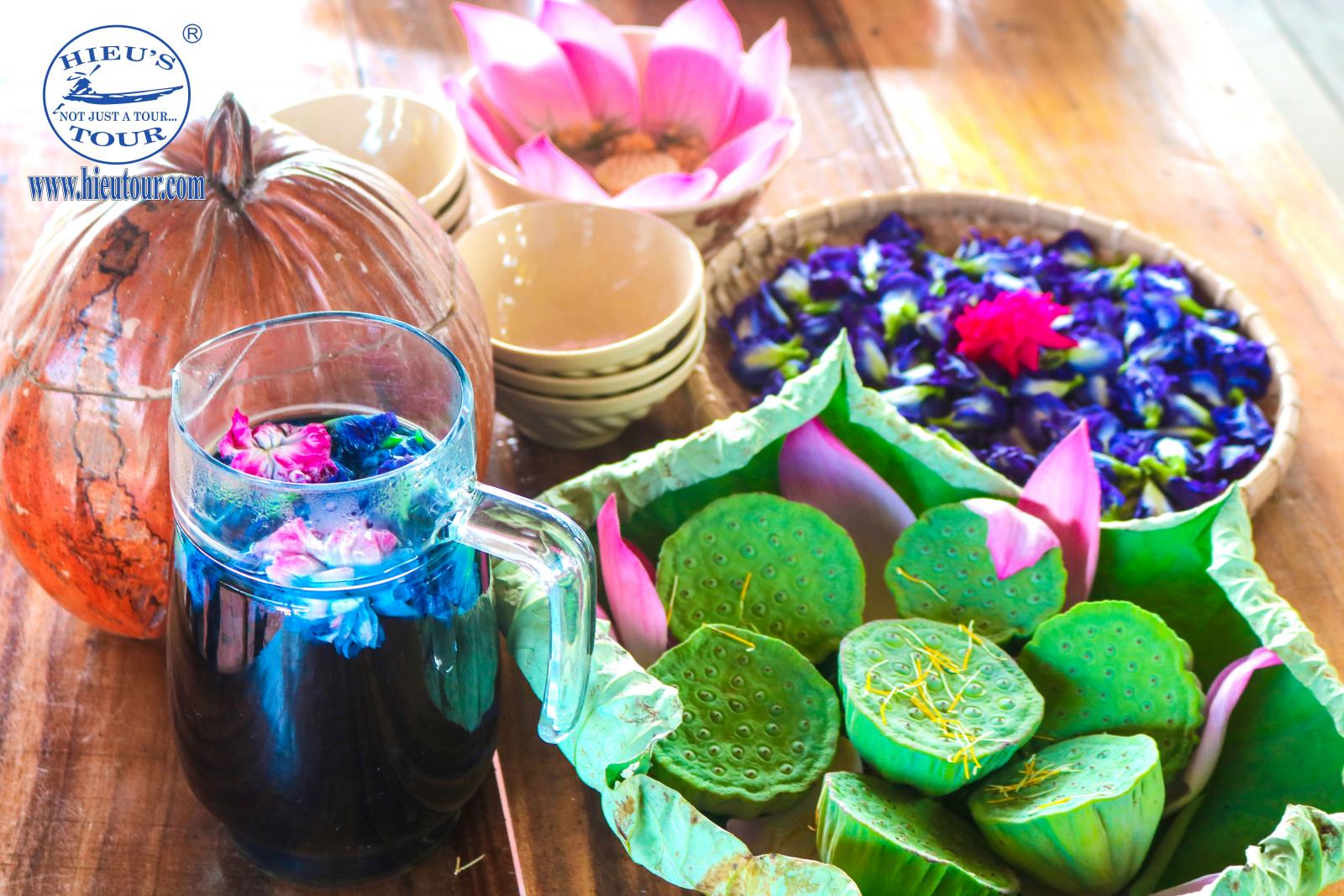
Known as an untouched area with a dense network of rivers, canals, and swamps used for the strategic base during the Vietnam War from 1960 to 1975, Xeo Quyt ecological site in Dong Thap is an attractive historical monument and eco-tourism site of Mekong Delta. There you can visit several historical landscapes and much magnificent natural beauty of layers of cool green melaleuca forest as well as explore narrow sampans through several untouched small canals. This is an extremely magnificent experience that you should never miss.
Huynh Thuy Le Ancient House is currently known as one of the most magnificent pieces of architecture representing tourism in the Mekong Delta and characterized by a combination of East-West architecture. The ancient house with 100 years old is also attracted by an incredible love story of famous French novel authoress and her love - Huynh Thuy Le.
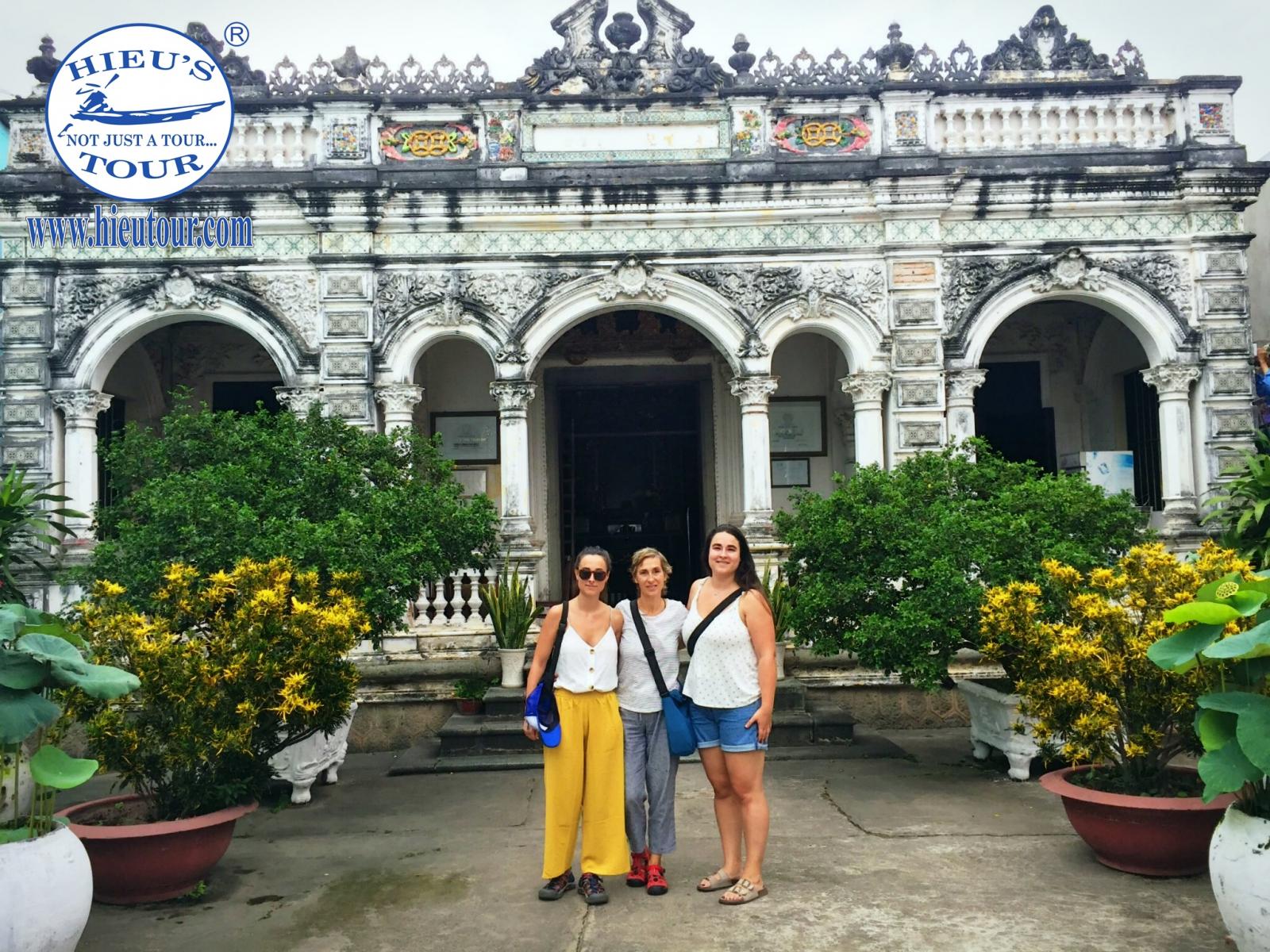
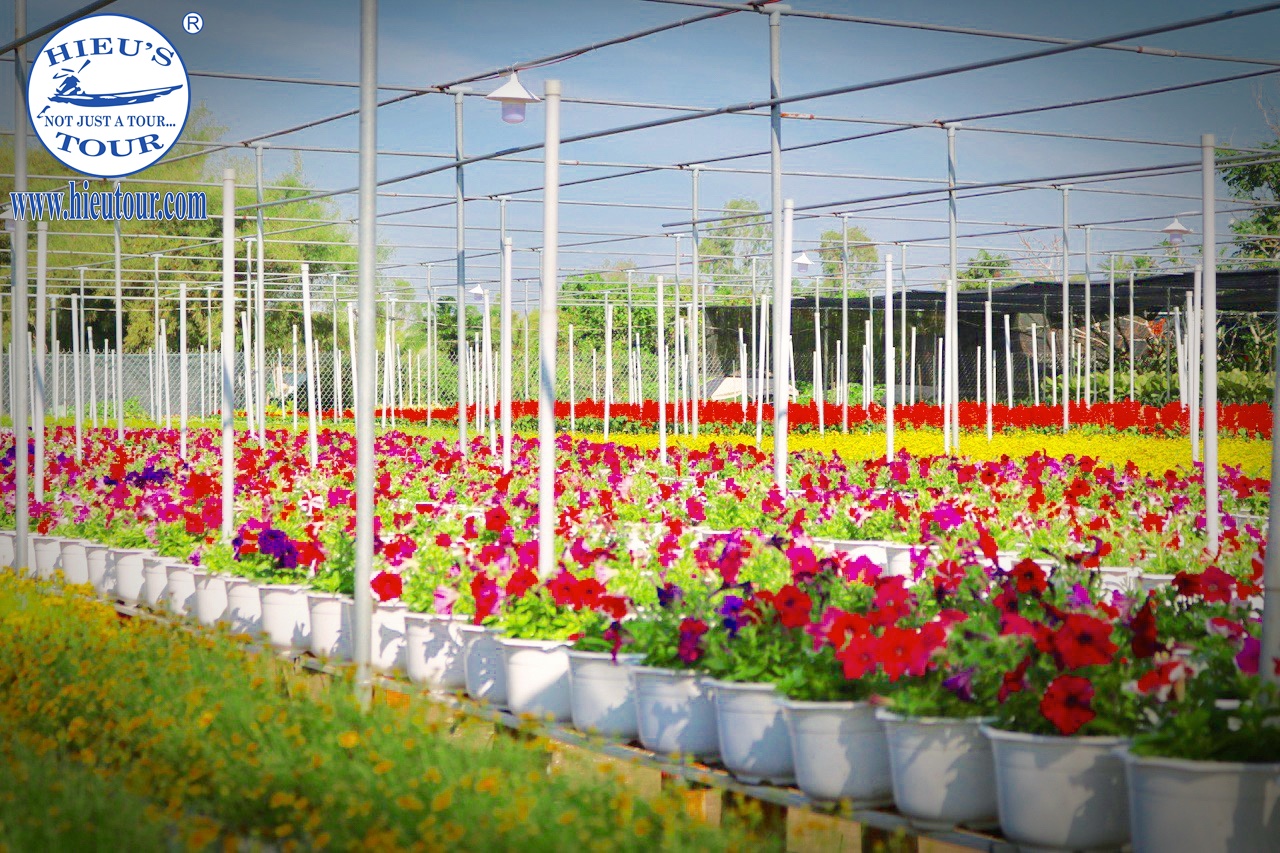

.jpg)
.jpg)
HAU GIANG
Surrounded by dense a network of many rivers and small canals in the center of the Mekong Delta, Hau Giang is the backbone of Vietnamese food security and a rare province in the south that isn’t infested by heavy industries. Coming to this beautiful place, visitors can enjoy a large number of uncountable hectares of rice fields, a multitude of orchards, and most hospitable people in the whole of Vietnam.
About 40km from Can Tho City to the southeast of Hau River, Lung Ngoc Hoang (Mua Xuan) bird sanctuary in Hau Giang is considered as the "green lung" of the Mekong Delta and the habitat of many rare and precious plants and animals. Coming to this place, visitors can also take a boat to float on the canals to commune with nature of the great cajuput Forests and some white storks fluttering between wild vast. This is a great destination for you to visitors will be immersed in the most pristine and untouched ecological system of the Southwest. Located in Hau Giang Province, there is some famous water hyacinth handicrafts basis, using materials from these plants to make some products that represent the Mekong culture. These handicrafts basic is also a place for the local people to have job creation and poverty alleviation in these rural areas.
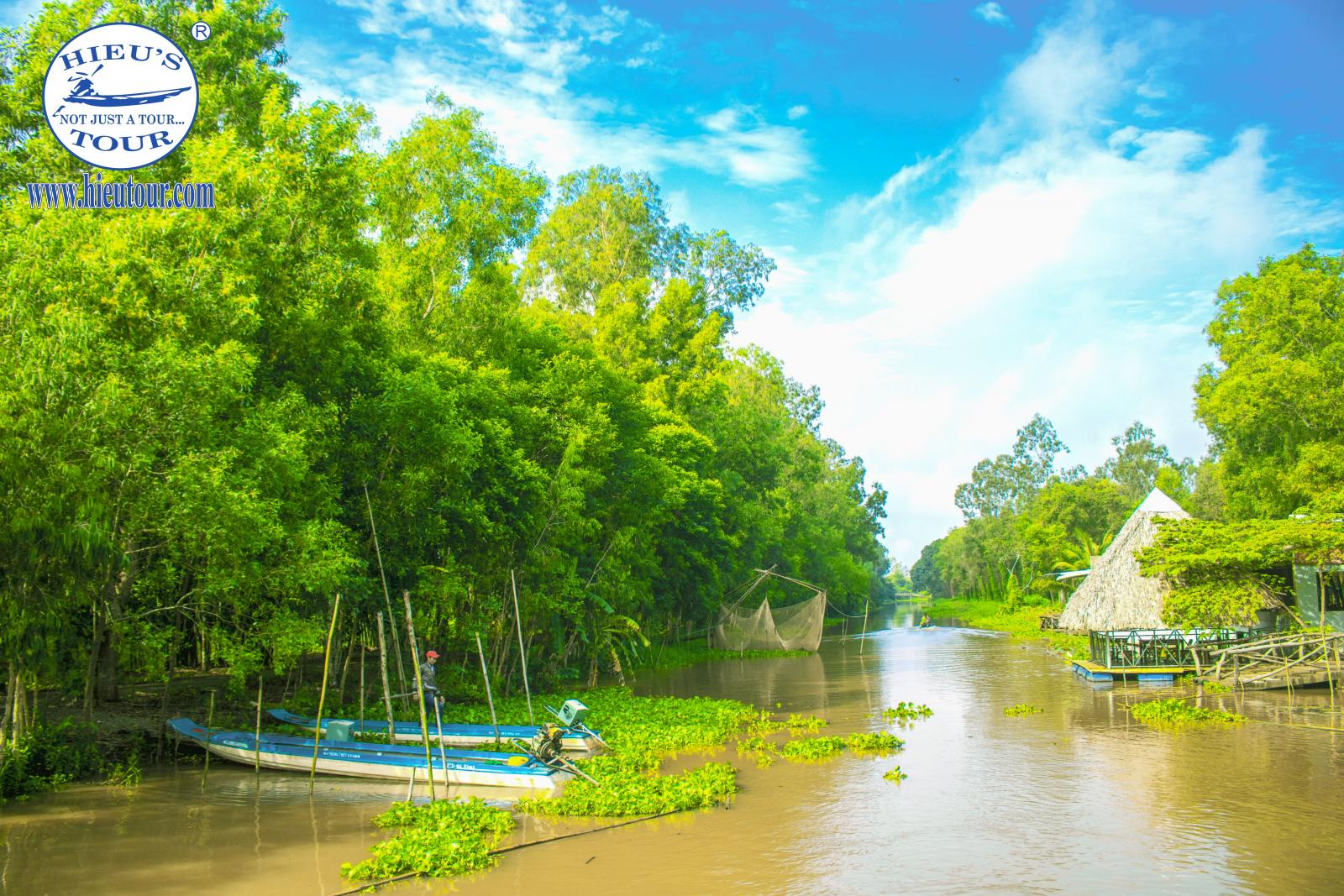
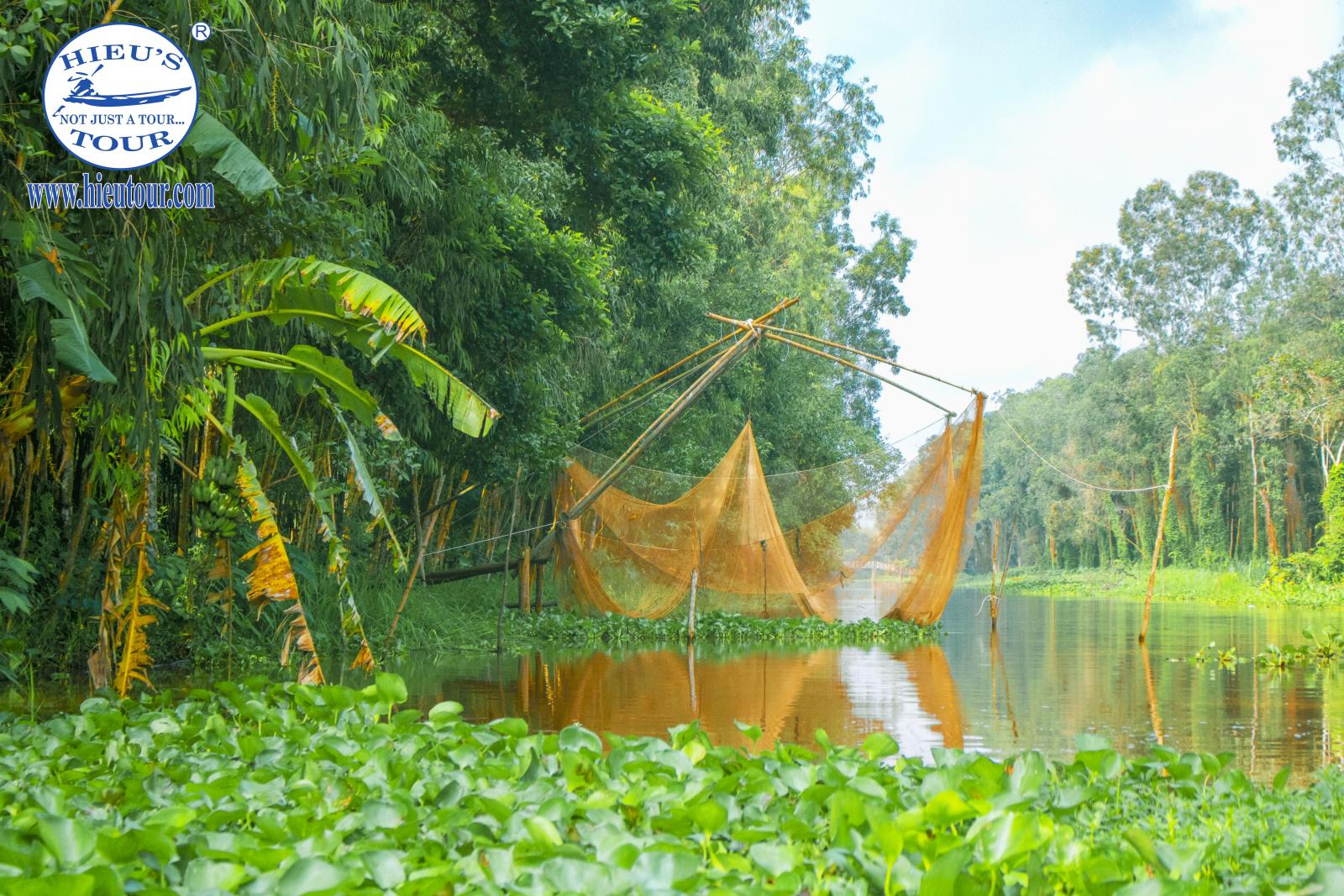
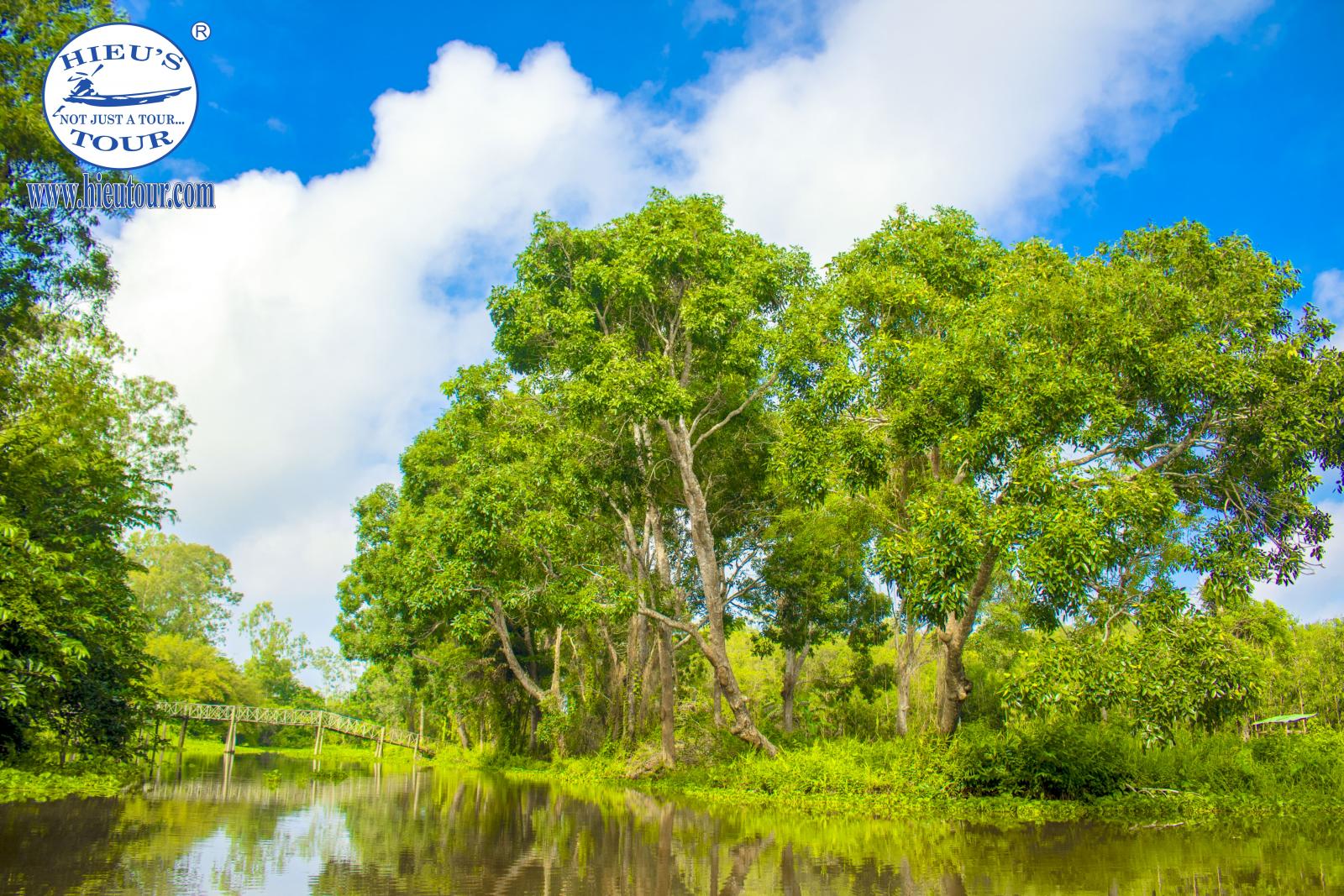
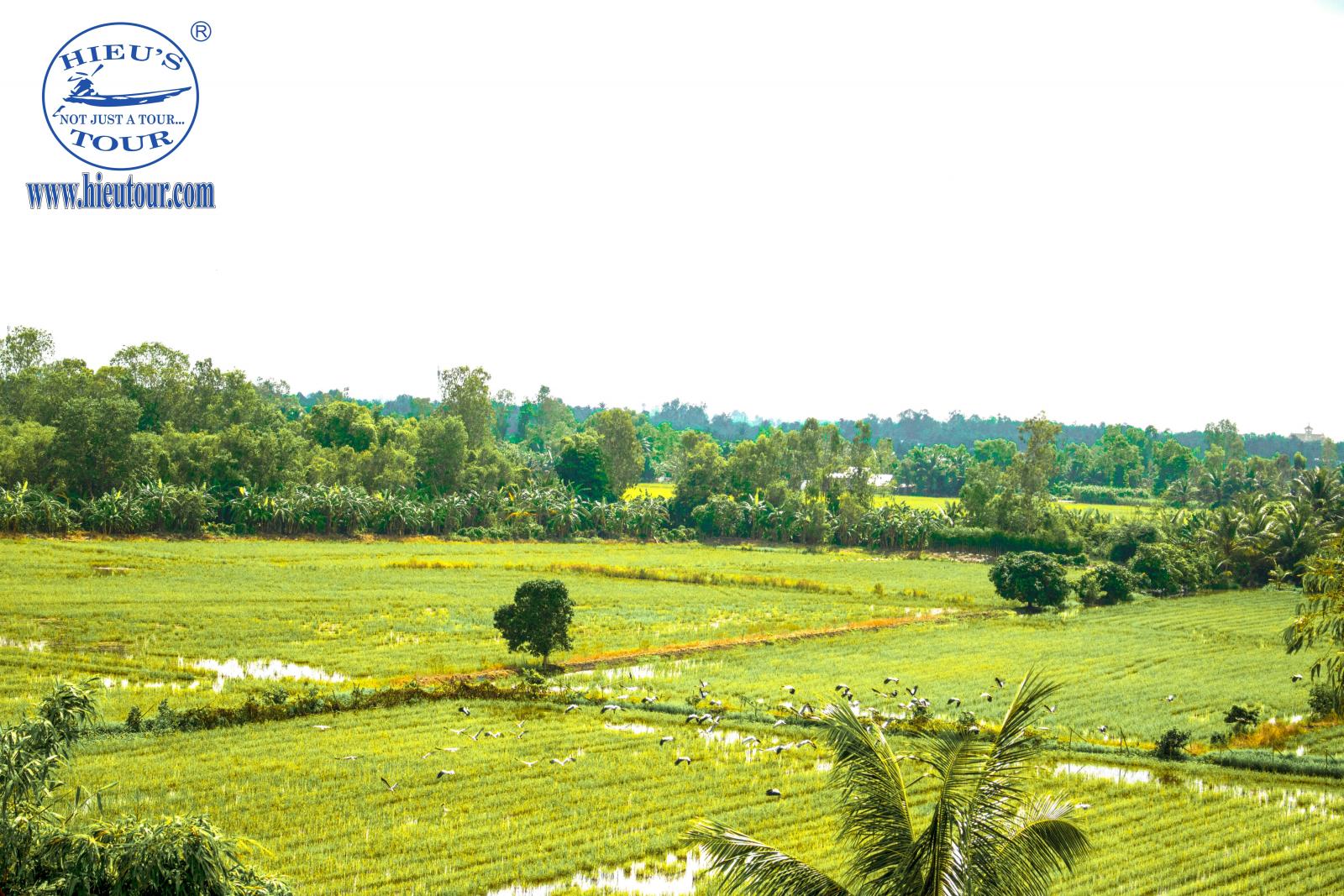
AN GIANG
As a border province in the Mekong delta, An Giang is a stunning destination with unique characteristics in tourist’s hearts. An Giang is famous for holy temples, floating village, the exquisite forest, and overwhelming mountains. It is the best options for the tourist to explore some famous religious spots and the culture of people from Vietnam ‘s ethnic minorities. There are some famous and stunning places for your interesting and exciting experience.
Tra Su forest: Tra Su is one of the famous cajuput forests with immense blue of the southern region. Covering a vast area of 850 hectares, this place is a typical habitat of cajuput trees and the home of many plants and animals. To explore the flooded mangrove forest and a great number of white storks as well as other species of birds, forest animals and fishes, travelers will take a boat along the small canals lining the forest. A boat tour with romantic natural scenery will surely give visitors relaxing and comfortable moments.
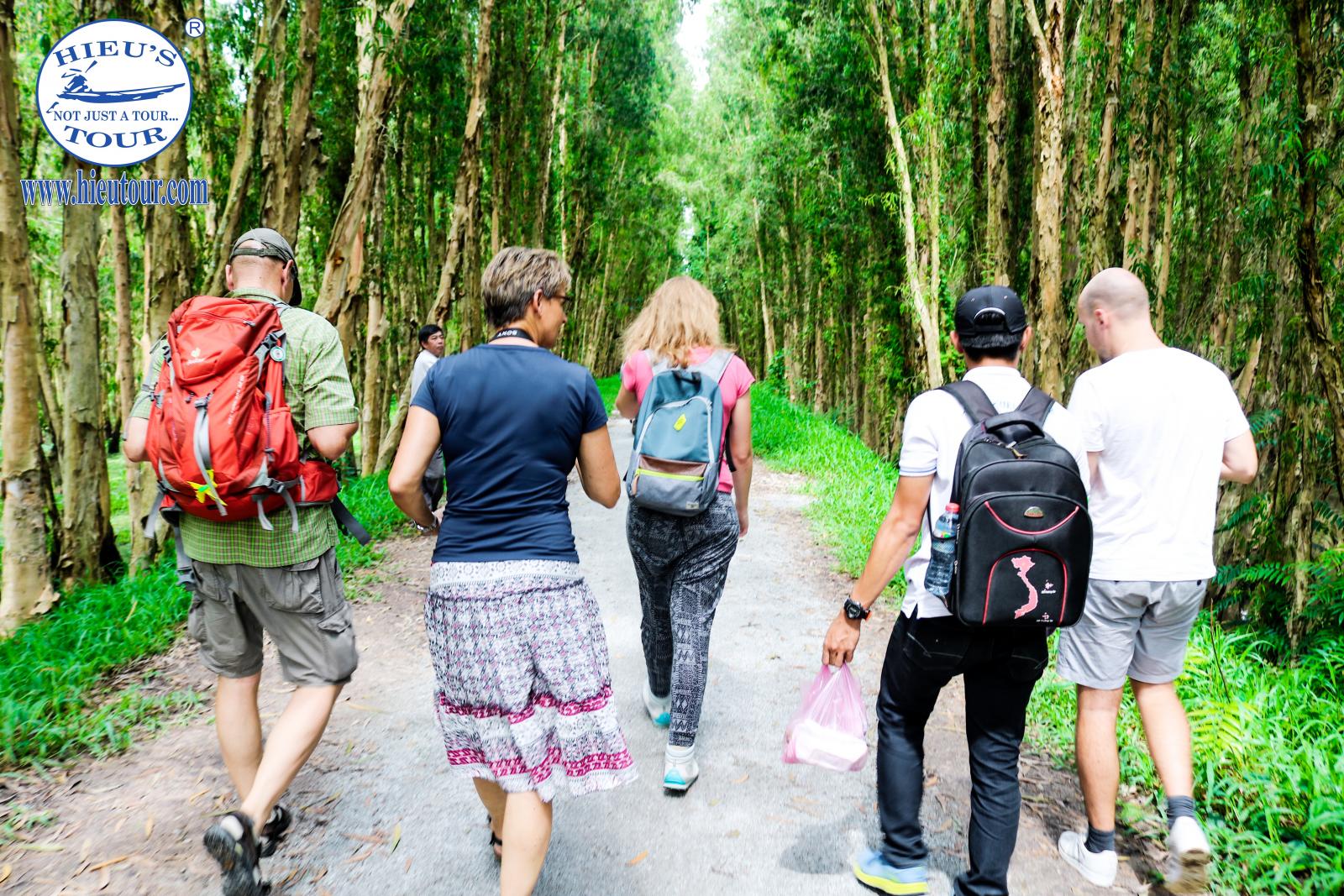
Temple of Sam Mountain Goddess: Sam mountain is a holy mountain to the locals in An Giang where a sacred temple is located in the foot of it. Every year, thousands of people from all over Vietnam coming here to worship the statue of the goddess inside the pagoda, they pray for health, business and happiness. In addition, if you are an adventurous person, you can do a small trek to go to the top of the mountain to observe the wonderful view of the rice fields below.
Forbidden Mountain: Apart from Sam mountain, there are many other famous mountains in An Giang, and most of them lie along the Vietnam-Cambodia border. In An Giang, there are 7 mountains that stay close together and become well-known for its mystery. In those 7 mountains, it’s believed that there are many people practicing magic and casting spells and that’s the reason why plenty of myths are rumored to everyone in the region. The forbidden mountain is one of those 7 mountains and this is also the tallest one in the Mekong delta with a height of around 705 meters. In this mountain, the atmosphere and weather are very cool and there are many quiet pagodas with the picturesque view and this is a great place for anyone who loves the stillness of being nowhere.

Floating village: An Giang is known as the capital of catfish of Vietnam, right there the local people build a floating village where they raise fishes in the middle of the Mekong river, and it will be a nice boat trip to visit this interesting village. Chau Doc market: Chau Doc market is the biggest local market in the region when coming there, you will see a variety of specialties, from fermented fish to smelly spices, and the market is the good place to understand more about the daily life of people.
Festivals: Sam Mountain Goddess Worshipping Festival: Annually, from 24 to 27 of Lunar April, there is the Worshipping Festival of Sam Mountain Goddess and thousands of people will come there to pray for a better life, if you are a festive person or a culture lover, that would be a great time for you. Water Buffalo Racing in the 7 Mountains: Annually, during the Sen Delta holiday, Khmer people in the 7 mountains will organize a water buffalo racing as a fun time after the hard-working harvest. If you can be here around that time, it would be great to join in this excitingly traditional occasion.
There are about 7 Cham villages and the famous one is Chau Giang, Cham village which is located in Tan Phu district, just on the other side of the Mekong River from Chau Doc city. Cham village is also known as a unique and interesting tourist spot attracting many tourists to explore the Cham Culture. It will not be a wise decision if you ignore Cham Village which owns the unique and harmonious cultural characteristics for your Mekong Delta tour. In the house, Cham women are making traditional brocade cotton silk, these silks are their main income to make a living. Besides, Cham people are also fishermen and they raise fruits and vegetables to make money. Explore this place, you can have a new perspective about the wearing traditional brocade of women, and wearing sarong and having taqiyah on their heads of the men. A visit to this attractive destination is seen as a wonderful excursion, bringing you lots of valuable things about both the culture and people of The Cham community. You can learn about the life, customs and the traditional weaving profession of Cham Muslim people.
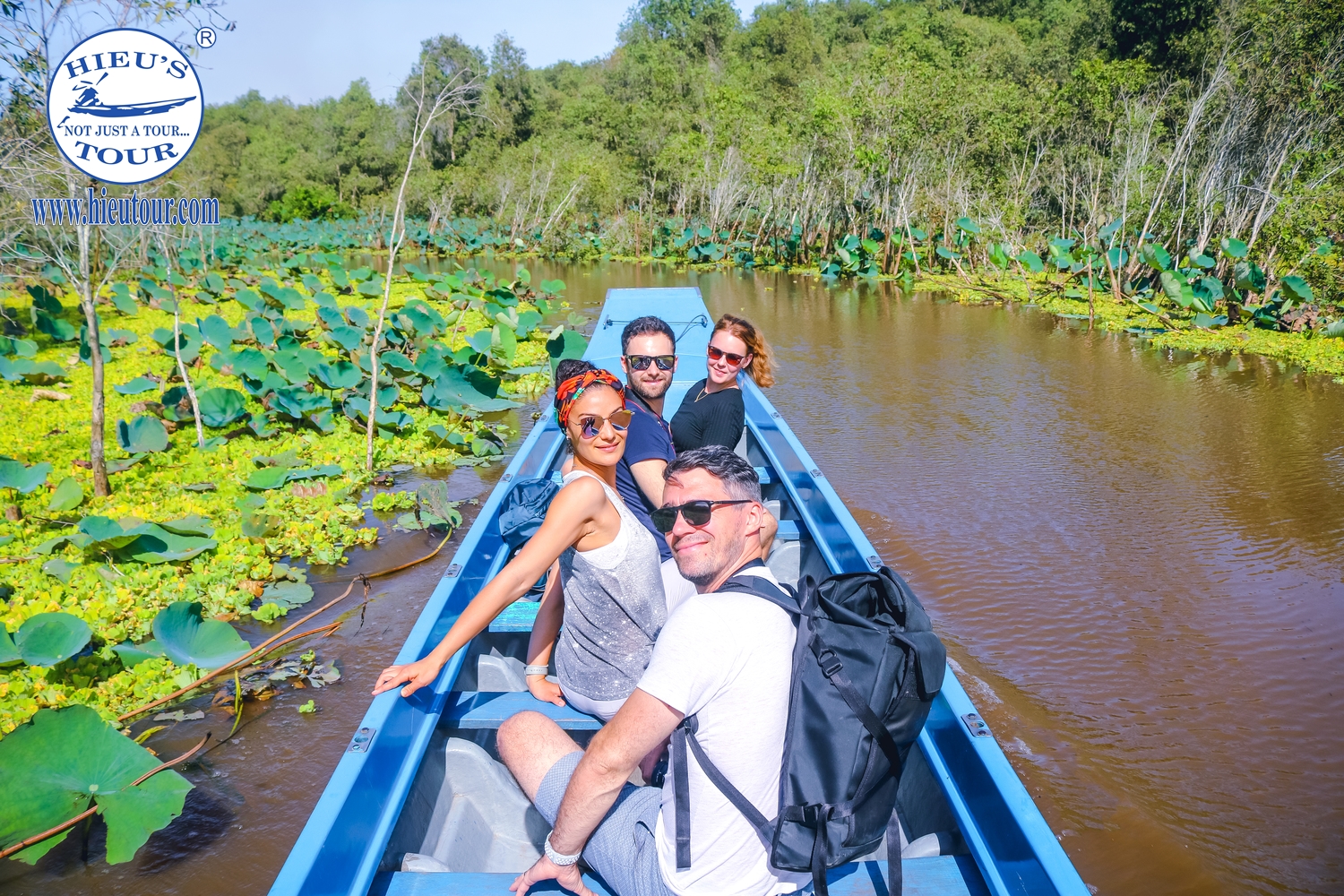

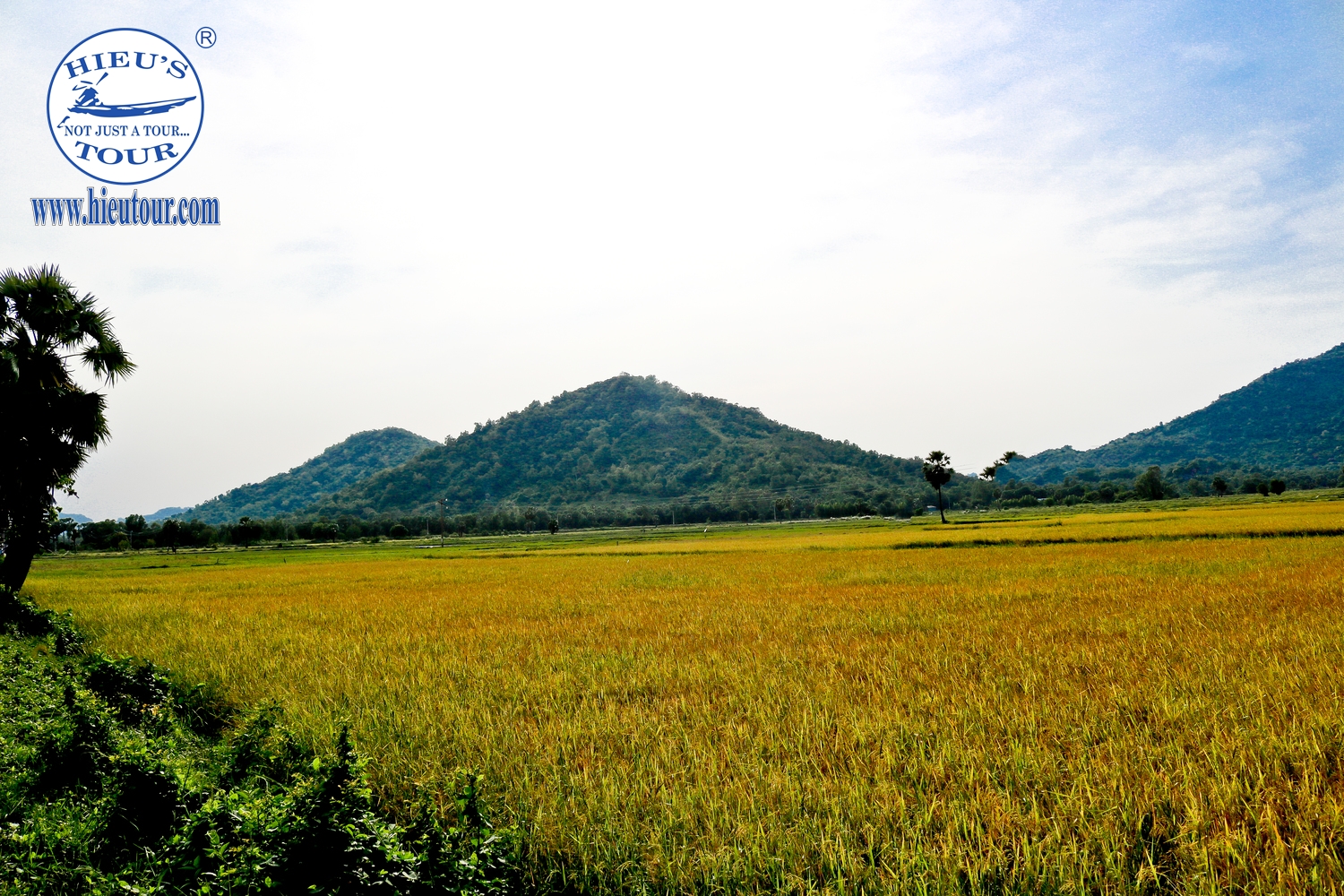
CAN THO – THE CAPITAL OF THE MEKONG DELTA
Being well-known as Tay Do or the capital of the Mekong Delta, Can Tho city is the destination that you cannot miss in your trip to the Southern part of Vietnam. Even though Can Tho is the 4th largest city in Vietnam with the population around 1.5 million people, but it is the best place for anyone who wants to get themselves immersed in the beautiful nature and people. In Can Tho, you not only have the chance to see the famous floating markets, but you can also drift along the breathtaking canals, learn more about the daily life of local people and let yourself be a part of all the activities here.
Floating markets: Your trip is not complete without visiting the floating markets in Can Tho. It will be a unique experience to take a boat, observe the beautiful sunrise, weave into the market, see the abundantly agricultural products, the hard work of boat traders and try the hot noodle soup as well as a hot coffee in the middle of the river in the early morning. It will be absolutely worth getting up early for the visitor and you can embrace the hustle and bustle of the floating markets. In Can Tho, there are 2 vibrant floating markets in the Mekong Delta you must visit, are Cai Rang and Phong Dien. The 1st one is the most famous and biggest floating markets in the Mekong delta and it’s much closer from the downtown of Can Tho. On the contrary, Phong Dien floating market is quite small with all the small boats, but it’s more authentic with fewer tourists. Unlike Cai Rang floating market, only agricultural products are mainly traded, Phong Dien floating market is more diverse. If you have a chance to visit Mekong Delta and can manage to get up early, why not see both of them!
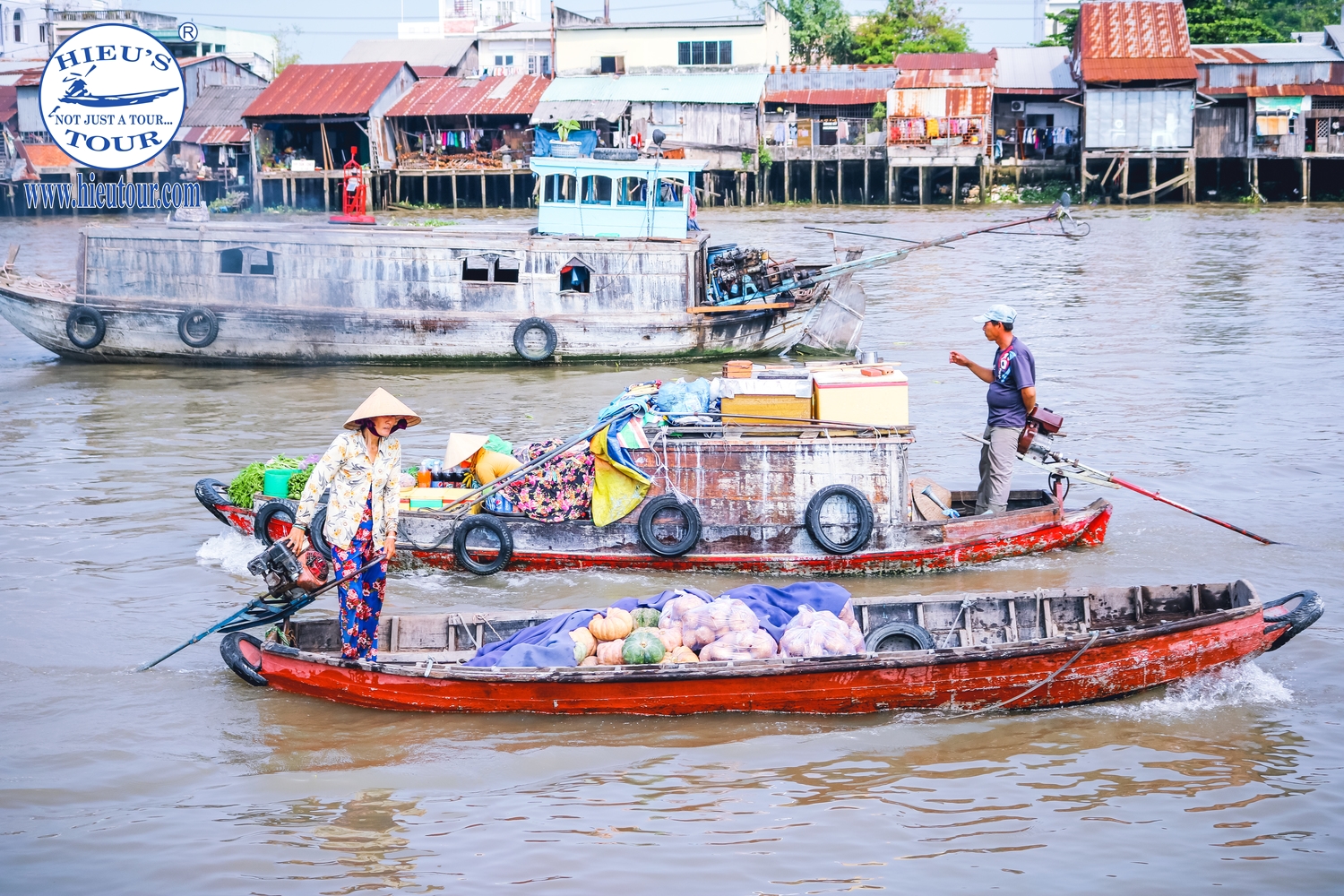
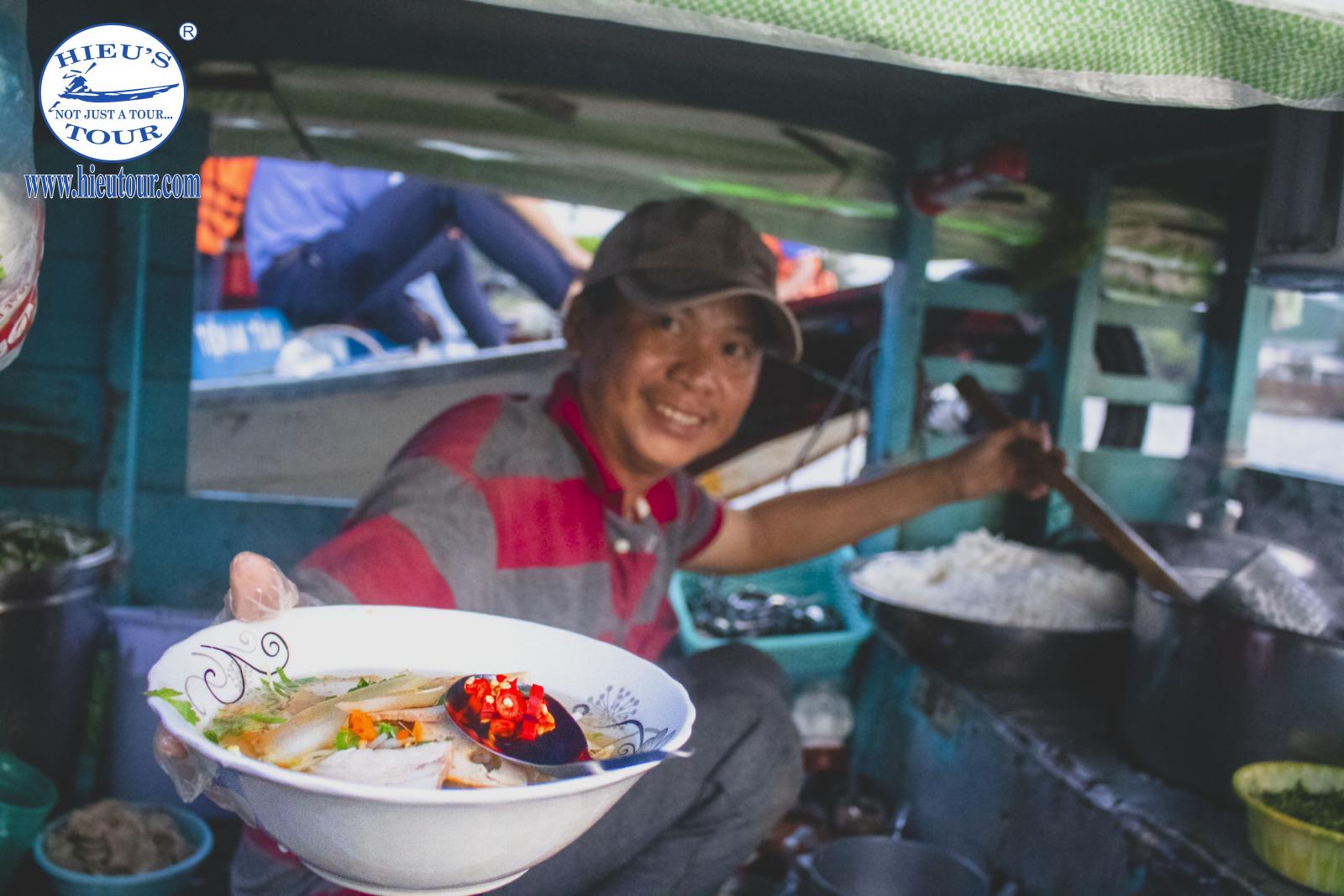
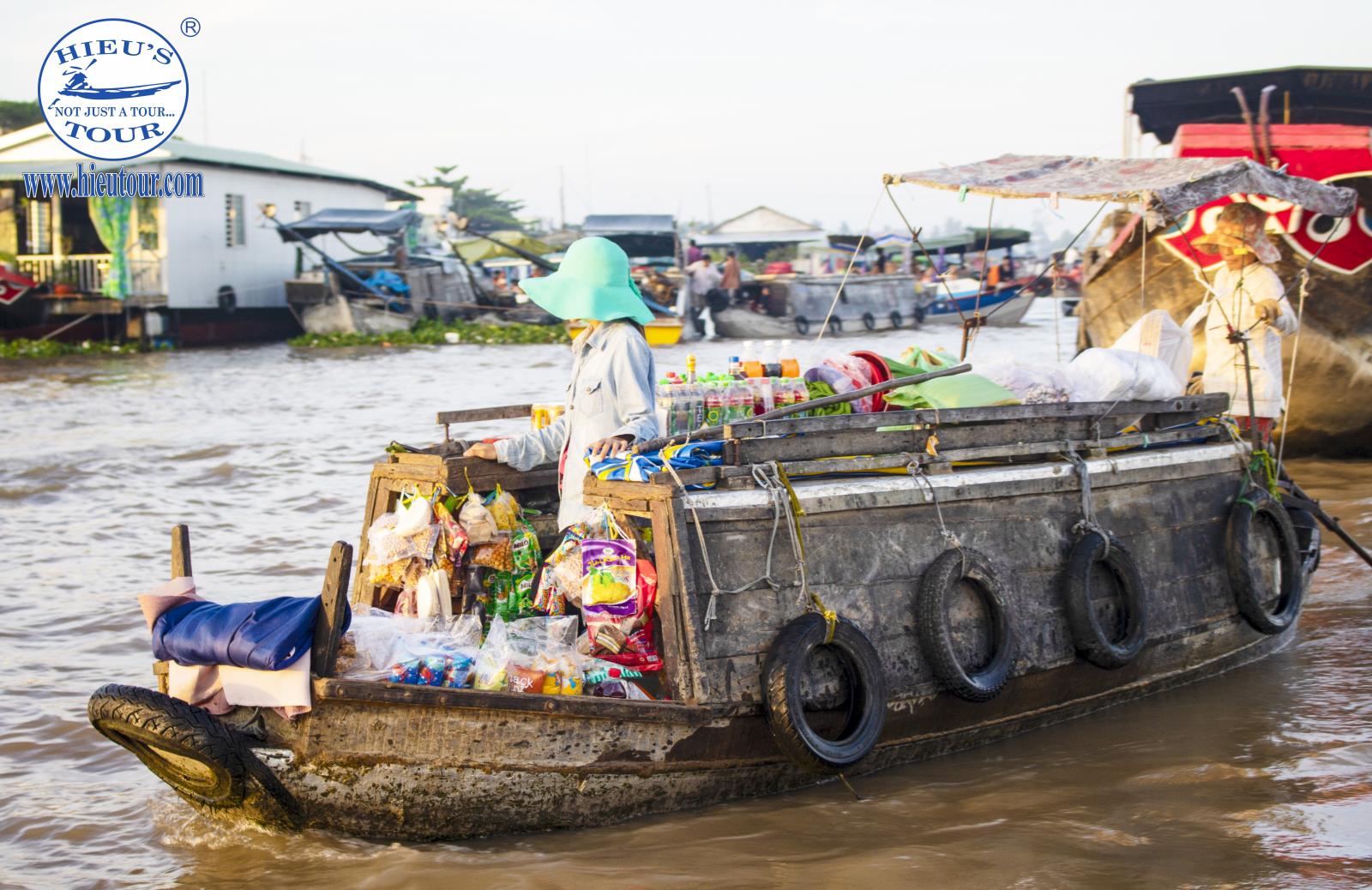


Organic cacao garden: Most of the foreign tourists, especially those who come from Europe or North America like to drink and eat chocolate, but they never see the cocoa trees in real life and have no idea how chocolate is manually made. That’s the reason why a trip to Muoi Cuong Cocoa garden is the best option to learn about this tree and an exciting story about it. Most importantly, you will get a treat with a cup of hot chocolate drink and yummy dark chocolate bars.


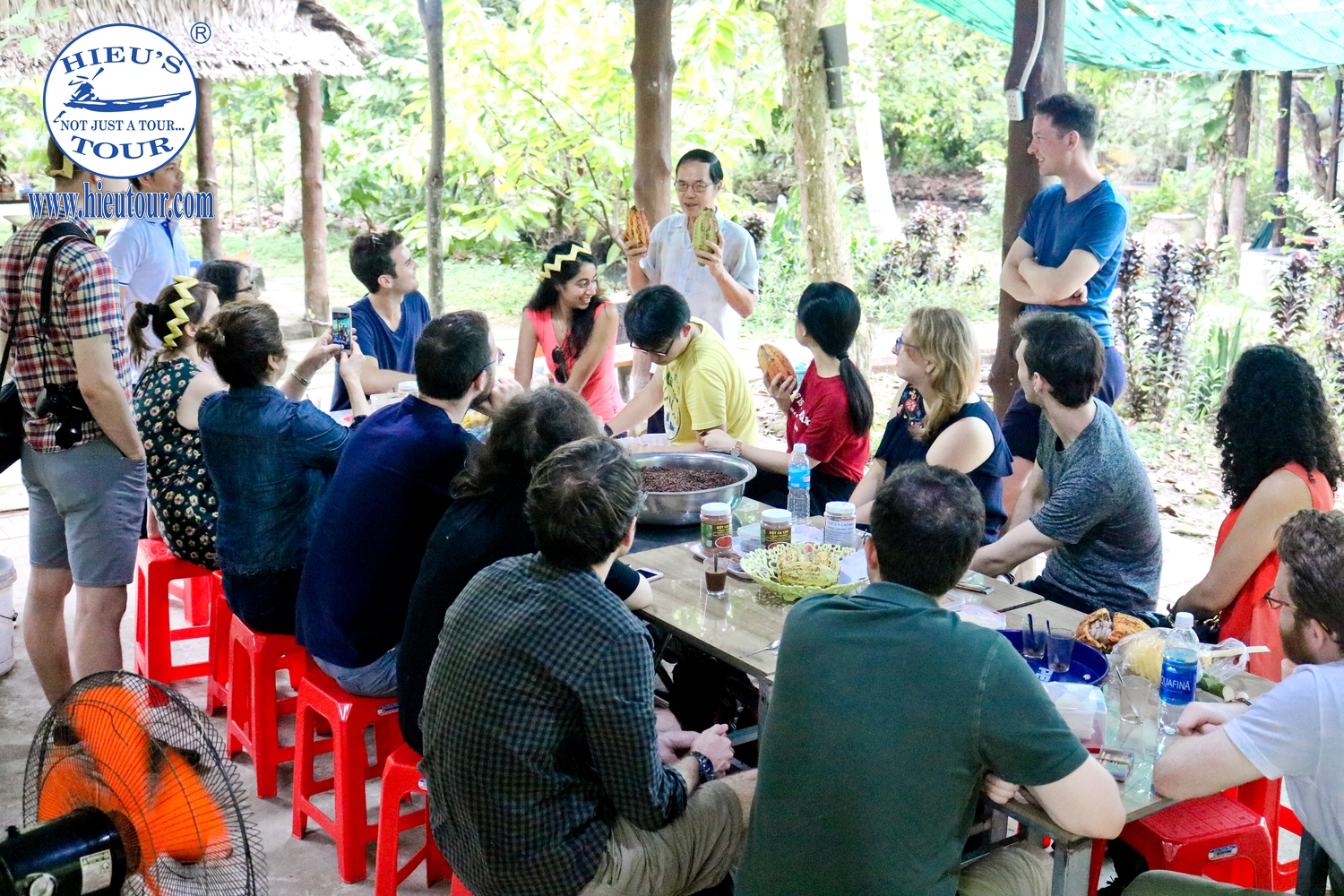
Small canals: Do you know that Can Tho was just elected as 1 of 15 cities with the most beautiful system of canals in the world by Departures Magazine of America, so it means you cannot skip this experience. Just imagine that you get on a boat and go along the peaceful canals and see all the fruits and plants on your way, more than that, you can also observe the daily life of the inhabitants here. People are very friendly here, they always smile with you and wave at you sometimes, and on your trip, you can see some cute ducks, chickens, and puppies, too. Besides, you can ask your boat captain to park somewhere, so you can take a short walk and we are sure it will be a very nice walk.
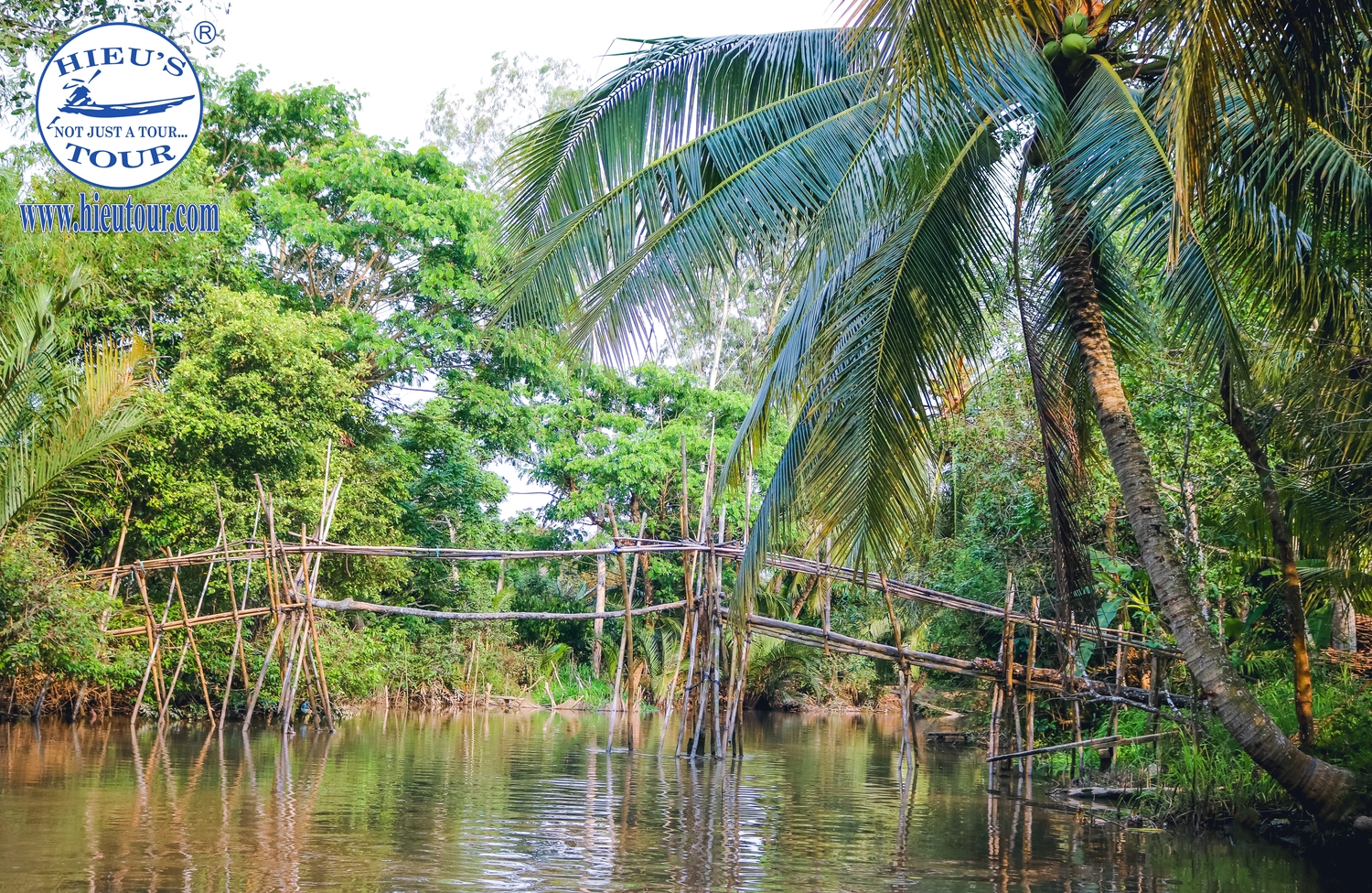
.jpg)

Noodle homemade: Coming to Vietnam, most of the tourists already have a chance to try different types of noodles here, but do you know about hu tieu which is the famous one in the Mekong delta. If not, you should go on a trip to try hu tieu in the floating market and then head to 6 Hoai Noodle factory to see how it is made. Normally, most of the noodles in Vietnam are rice noodles, but it’s different here, so you’re going to see hu tieu - rice and tapioca noodles in this traditional manual factory.
.jpg)

Located at Bui Huu Nghia street of Binh Thuy ward, Binh Thuy Ancient House is a famous tourist attraction to both Vietnamese and foreign tourists for its “east meets west” architecture and also because of the story of the famous Duong family. The house is renowned for its combination of traditional and western architecture; however, the story is famous for its background and other interesting things as well.
Son Islet is a small island in the middle of the Mekong river and it’s located in the outskirt of Binh Thuy district. Con Son is a new rising spot as it still preserves its original beauty and it’s a great place to find yourself lost in the nature of the countryside.
Built-in 1894 by the Chinese community who was refugees in this time, Ong Temple is an important religious spot for local people and an attraction to tourists. Located at Hai Ba Trung street and opposite to Ho Chi Minh statue, Ong Temple is hidden and surrounded by modern hotels with total dimensions just around 532 m2.
Ninh Kieu Quay is called the heart of Can Tho city where people gather to get together at night time. There’s a famous poetic saying about Ninh Kieu Quay like this: Cantho has Ninh Kieu quay, many romantic rivers and lots of beautiful girls as well. The name “Ninh Kieu” comes from the victory of Le Loi against Ming’s army and now it’s a lovely name for the downtown of Can Tho. About 5km from the center of Can Tho City and located in Binh Thuy Ward, Binh Thuy Dist, Binh Thuy Temple or Long Tuyen Ancient Temple is one of the most famous traditional temples in Can Tho City. Although spending a lot of time restoring, the temple still remains traditional architectural design. In 1989, this temple is recognized as a national architectural art relic.
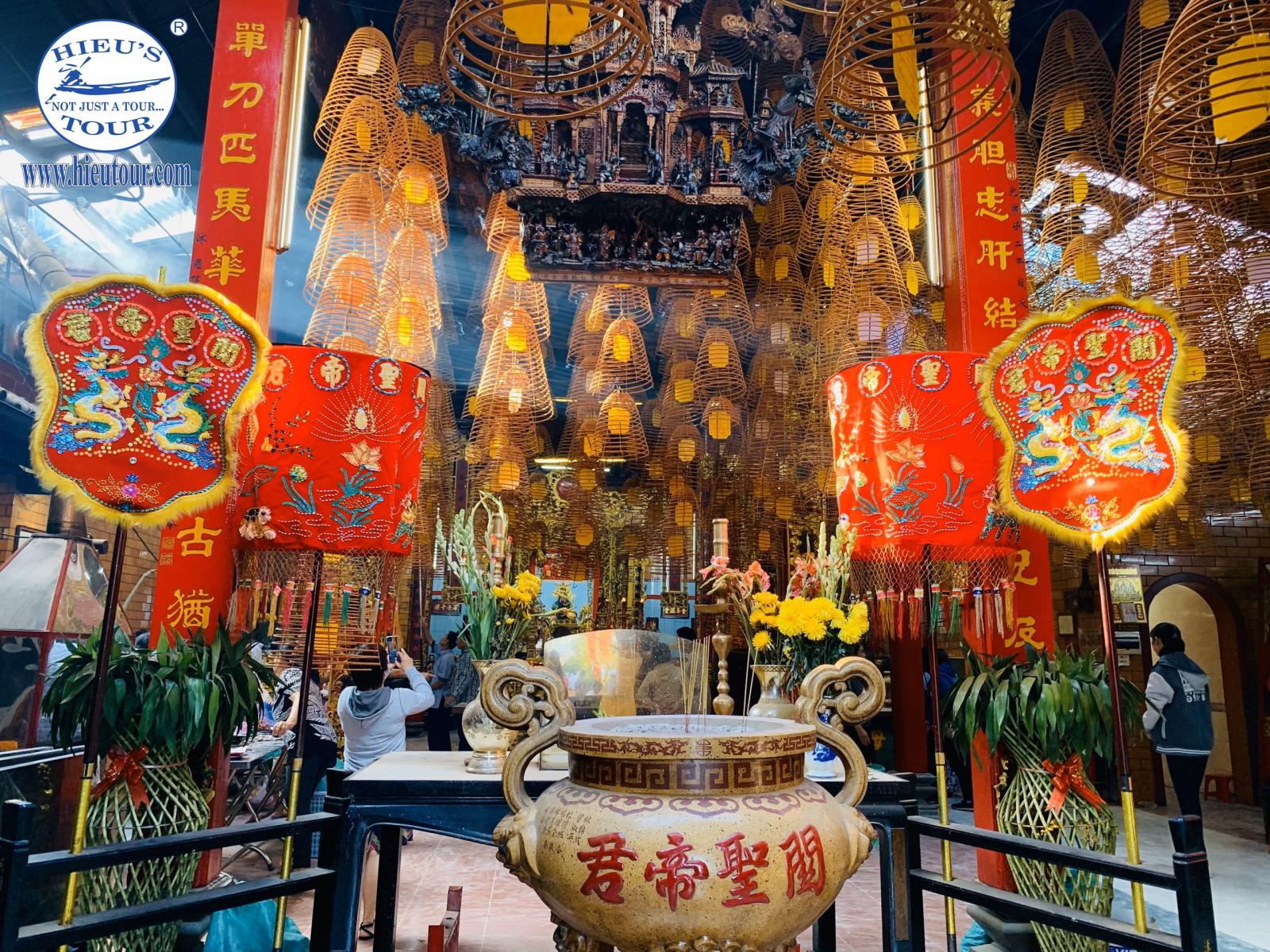
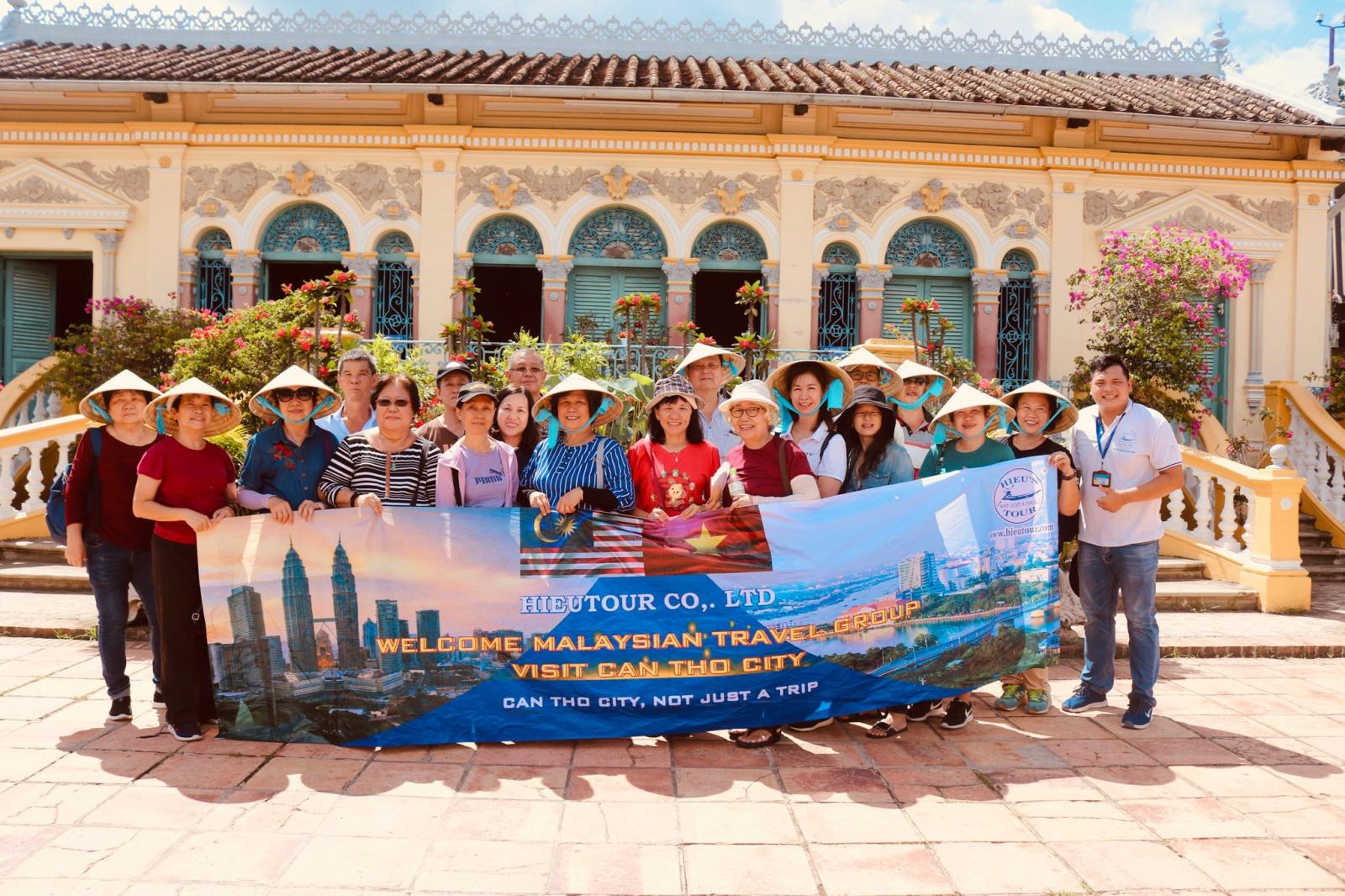
Truc Lam Phuong Nam Monastery. Located in My Khanh, Phong Dien, Can Tho, with a total value of 145 billion. The construction with Buddhism architecture of the Ly-Tran Dynasties. And it is considered one of the most unique monasteries in this area and Mekong Delta.
Established in 1976 and has more than 5000 objects and historical relics, Can Tho Museum is one of the largest museums in the Mekong delta. You will have some extremely interesting experience about the geographical position, flora and fauna, land, landscape, and climate of the river and culture of 3 ethnic Kinh - Hoa - Khmer on the ground floor of this museum. The second floor of Can Tho museum makes you understand more about the arduous struggle of Can Tho people in the war. The visitor will have more knowledge of local history and an authentic overview of today’s beautiful Tay Do land. With the similar architecture of three treasures towers of Angkor Wat, Munir Assay Pagoda is a beautiful and spacious pagoda that you should not miss to drop for the journey to visit the capital of the Mekong Delta.
Being known as Hang Duong Market and "six-province market" during French colonies, Can Tho Ancient Market is the famous tourist destination with the romantic beauty and unique architecture of the Mekong Delta. Located in Hai Ba Trung street, Tan An Ward, Ninh Kieu District, Can Tho city, this market was built at the same time with the two famous markets - Ben Thanh and Binh Tay in Ho Chi Minh City. In 2012, this market was recognized as a provincial historical-cultural relic.
SOC TRANG
Located about 62km to the south of Can Tho city and covered an area of 3.311 km2, Soc Trang is one of the attractive and beautiful provinces with charming natural scenery and a large number of splendid pagodas you must visit in Mekong Delta. Soc Trang attracts tourists by cultural interference between the Cambodian, Chinese and Vietnamese ethnicities and the indigenous peoples. Come here, visitor can immerse themselves into some famous temples, unique festivals, the immense rice paddies, and luxurious fruit gardens.
There are some famous and stunning places for your interesting and exciting experience.
Nga Nam floating market is an extremely unique floating market which tourists should not ignore when visiting Soc Trang Province. Nga Nam is one of the special and stunning floating markets of Mekong Delta with five rivers emitting five paths. Nga Nam floating market provides visitors insightful views into the austere life of Vietnamese watery vendors. Coming here, visitors can have a chance to explore the busy and noisy atmosphere of the local people by trading many types of products such as rice, meat, fresh fruits, and others. Tourists will be served with some of the most popular climatic fruits in which freshness and flavorful pulp can satisfy even the palates of the highest caliber. Nga Nam floating market is an extremely famous destination should visit in Nga Nam town, Thanh Tri district, Soc Trang province.
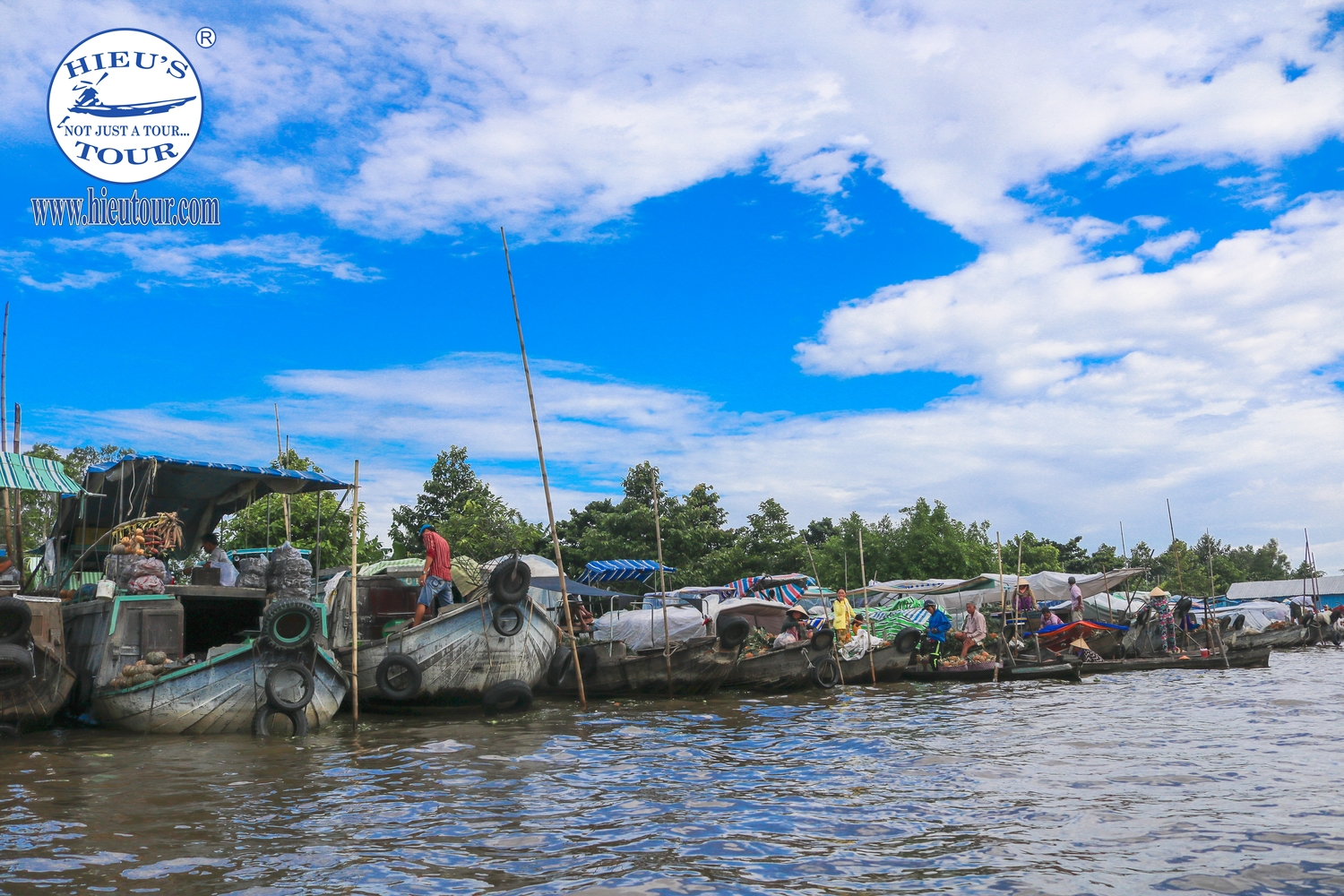
With the distance about 4km from Soc Trang City, Chua Doi, Wat Mahatup or Bat Pagoda, is one of the oldest Buddhist temples in Kampuchea-Krom having first built over 400 years ago. The pagoda impressed by the unique architecture of skillful Khmer arts, some splendid relieves with smooth and magnificent contour. Besides these, the pagoda is absolutely famous for a great number of giant bats swinging in immeasurably-high branches and roosting in pagoda’s garden as their home, so this place is widely known as Doi pagoda more than the actual name - Mahatup or Ma Toc. When the bats on the way to search for food, they made the bustling which people said like an invocation of the blessing of the bats from the Buddha. The story about pigs with five hoofs for over 20 years also made this temple more attractive and mysterious. The pagoda built around the 16th century is a place for the community culture of many local people by trading some local products around the pagoda's garden. Besides visitors can enjoy The Khmer culture at Bat Pagoda by listening to Khmer music by the local people. In a large space with a lot of trees, Doi Pagoda is a tranquil place for the meditation at a lake named "Hồ Tịnh Tâm" (lake for praying) in the backyard of the pagoda. The most famous temple in Vietnam’s Mekong Delta is one of the must-see destinations for the tourist.
.jpg)
Located at the heart of Soc Trang, Buu Son Tu, Chu Dat Set or Clay Pagoda is one of the most famous destinations and a historical and cultural relic of the Mekong Delta Province of Soc Trang. With the history of more than 200 years ago, this pagoda is now run by members of the Ngo family's fourth generation. It is highly unusual that pagoda is made entirely of clay to mold the worshipping statues, mascots instead of bronze casting or engraving wood. All of the unique statues in this pagoda were engraved, subtly molded by Mr. Kim Tong Ngo after his dream of Buddha. With four pairs of giant candles that weigh 200kg each burning before 1975 until now, made one of the well-known things for this pagoda.
The famous pagodas in Soc Trang are not only Clay Pagoda (Buu Son Tu) or Doi pagoda..., but also Chen Kieu pagoda. This is the oldest temple in Soc Trang, built for nearly 500 years ago. This temple is decorated with elaborate patterns with bright colors according to the Cham cultural style of the ancient Khmer. With thousands of bowls of all sizes attached to its roof, walls, and pillars, Chua Chen Kieu (Pagoda of Decorative Bowls) is a spectacular example of Khmer architecture.

BAC LIEU
With the shared border on the north with Hau Giang, on the northeast with Soc Trang, on the northwest Kien Giang, with Ca Mau on the west, and the rest with the sea, Bac Lieu is very famous for its aquaculture, salt fields, wind turbines, traditional music of the South (Cai Luong) and the legend of Bac Lieu landlord Tran Trinh Huy. Bac Lieu sounds a great place to visit in the Mekong Delta with:
House of Bac Lieu Dude – It must come in place in Bac Lieu to deeply understand the myths behind the reputation of the mansion. The mansion is associated with the anecdote of Bac Lieu Dandy Tran Trinh Huy and some stories about this infamous guy in the Southern province of Bac Lieu in the early 20th century. With the asset value is up to over 17 billion dollars, the house owns a luxury color of white and splendid French architecture with the combination between the Eastern and Western culture. All of the cast steel, marble, bricks, etc. were carved with the letter P which means ‘originating from Paris’ - the magnificent capital of French. The most prominent house in six Southern provinces at that time featured not only by the splendid architecture but also by the precious interior furniture with many different rare antiques. Overall, there are 3 floors in this luxury mansion, the first floor with 2 bedrooms of the Bac Lieu Dude and his father - Mr. Council of Trach, a spacious living room to welcome the precious friends in the second floor, 3 other bedrooms two halls, a cool terrace balcony in the upper one. The delicate and luxury architecture and precious interior furniture with some meticulously carved pots, the winter and summer beds make the visitor who is curious about Bac Lieu Dude's asset value. This attractive house is difficult to ignore if visitors ever have an opportunity to visit Bac Lieu.
Situated in Hiep Thanh Commune, Bac Lieu City, Xiêm Cán pagoda is one of the most attractive cultural going sites in South of Vietnam and one of the famous destinations that nobody can ignore. The splendid architectural structure of the Khmer community in this pagoda is similar to those of Cambodia’s. The pagoda has many elaborate images engravings, with the eye-catching statue of multiple-head snake genies, towers designed with the Cambodian Angkor style. Visiting the pagoda, tourists can have an opportunity to explore the religion’s beliefs of Khmer and discover the famous spiritual destination of the province.
Located in Vinh Trach Dong commune of Bac Lieu city, the Bac Lieu wind farm is one of the most attractive tourist destinations of the Mekong Delta province of Bac Lieu. This place delivers clean wind electricity to the national power grid with a total of 62 wind turbines which each one has a height of 80 meters and a weight of more than 200 tonnes. This beautiful scene, as well as a spectacular tourist attraction, will bring new breath for those who have a chance to visit the Bac Lieu wind farm which considered as ‘the country of the windmill’ – distant Netherlands.
Bac Lieu is also renowned for its religious constructions like the mother of the Southern sea (which is the Boddhisatva - the lady Buddha) and the church of Father Phanxico (Francisco) Truong Buu Diep which is a holy place to the catholic pilgrims.
CA MAU
Cau Mau is the province in the south of Vietnam where it has the famous Ca Mau tip. Ca Mau itself is a peninsula with a long coastline, in total Ca Mau has around 5.300 km2 area with over 1.4 million people.
Initially, Ca Mau was founded by a Chinese man called Mac Cuu and that’s the reason why Ca Mau has a big community of Chinese, in detail Ca Mau city itself is considered to be a Chinatown already. Moreover, Ca Mau is famous for its aquaculture with many varieties of seafood like crab, shrimps, and fish. However, Ca Mau is not that famous for tourism, except Ca Mui tip - the last land of Vietnam, or some tourist spots like Hon Da Bac (Silver).
The cape of Ca Mau: Located in Mui village, Dat Mui commune, Ngoc Hien district, more than 100 km from Ca Mau city, the cape of Ca Mau - Mui Ca Mau is not only the southern end location of Vietnam but also the famous destination with sacred meaning for the Vietnamese people. Coming here, visitors can have a chance to see the magnificent land strip of the country by the observation tower, and have some unique photos with the beautiful architecture of a white ship toward the sea.
Hon Da Bac: Located in Kinh Hon Hamlet, Khanh Binh Tay commune, Tran Van Thoi district, Ca Mau province, which is about 50km from Ca Mau city, Hon Da Bac is a stunning Eco-tourism destination for visitors in their journey to explore the end land of the country. With the area about 6.43ha, there are a great number of spectacular sites such as Tien Tien, Gieng Tien, Ban Chan Tien, Ban Tay Tien, Ong Ong Pagoda on this beautiful island.
U Minh Ha National Park: Situated in Khanh Lam, Khanh An, Khanh Binh Tay Bac and Tran Hoi Communes of U Minh and Tran Van Thoi districts, U Minh Ha National Park is also one of the most attractive sights to explore a diverse and unique system of animals and plants with an unforgettable feeling.
Lam Vien 19/5: Situated about 2km to the West of Ca Mau City, Lam Vien 19/5 is an entertainment area of about 18.2ha with many small landscapes including flower gardens, monuments, clusters of stilt houses and Uncle Ho's fish pond. This is also home to a large number of species of mangrove-specific creatures, especially a lot of birds.
Maybe, in the future Ca Mau will attract more people to come for ecotourism like experiencing being a farmer in the village near the mangrove forest and catching fish, crab, so on.

.png)




